This article a total of 12511 words, it is recommended to read 10 minutes, a hardcore A powder Memoir memoir, said that there is no time to read the keyboard man can jump directly to the comment area to tear B!
[PConline Talk] The AMD Ryzen processor that landed on the land of Shenzhou was given the local name of "Rui Long", which made many AMD loyal fans cheer! Indeed, since the launch of AMD's FX series processors in 2011, the "Dragon" processor with strong Chinese characteristics has disappeared in the high-end market. In just a few years, it was the year that AMD's high-end market collapsed. It seems that it seems that AMD has the foresight to know that the FX's modular architecture is doomed to beat its opponents, leaving the "dragon" dead and avoiding messing up its own signs.
Through the melody of Rui Long's beach, Xiao Bian brings you an appetizing dish of Rui Long, and recalls the history of the AMD CPU series with the word “Dragonâ€.
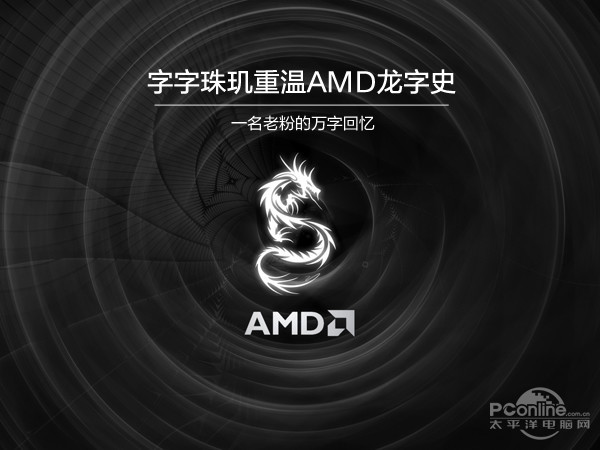
Apparently: Athlon's active time: June 23, 1999 to June 2001
Back to the end of the last century, the AMD K6-2 made a comeback in the competition with Intel Pentium II at that time. With the AMD 3DNow! and superscalar MMX technology, it also supported the 100MHz system bus, enabling the world to recognize the strength of AMD.
The first generation Athlon: code K7

AMD Athlon
In 1999, it came to a time of competition with the Pentium. AMD's seventh-generation architecture, the x86 processor, was officially launched and again called Intel. At the time of the release of K7, AMD is no longer satisfied with the simple code as a model, and naturally it is thought of as a spokesperson on a tall name band. The Decathlon was taken from track and field. The first Athlon processor made its debut on June 23, 1999.
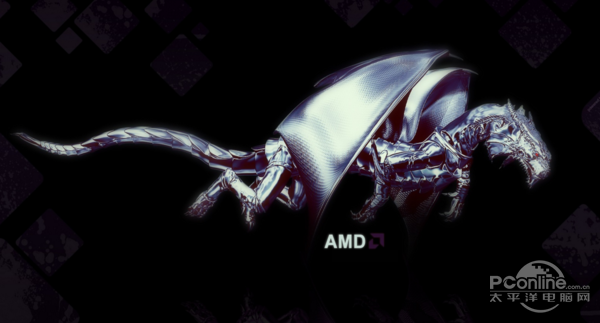
Given the name of Athlon, it opened the bond between AMD and Dragon.
At the time, AMD saw that the Pentium processor became famous in China with the Pentium name and Pentium TV advertising effect at that time. Natural AMD also wanted to think of a localized good name for the Chinese market. According to the pronunciation of Athlon, the homonym of "Athlon" was named. Since then, a name that affects all DIY players has appeared.
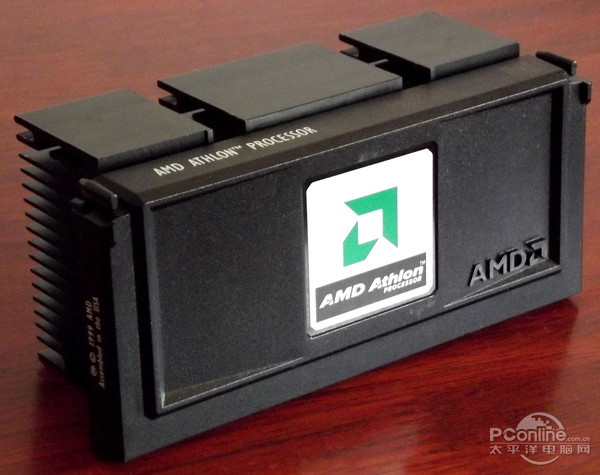
I believe that more than 95% of DIY players have not played this kind of CPU?
The first-generation Athlon processor did not have a suffix, but instead represented the model directly with frequency, which was consistent with the Pentium III at that time. The frequency of the first batch of processors is between 500 and 700MHz, the process is 250nm, its slot is Slot-A, this kind of unique socket is the memory of the old DIY player.
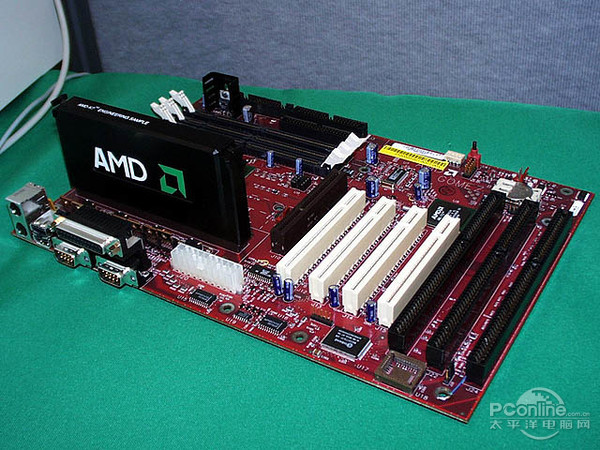
Did the video card that was plugged into the motherboard seen?
Similar to the Pentium II Slot 1, but the two slots are not compatible (inverted 180 degrees).
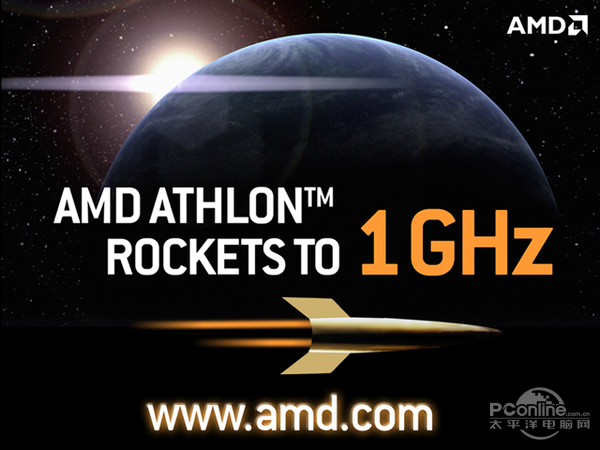
AMD's 1GHz Milestone Advertisement
On November 29, 1999, AMD introduced the 180-nm Athlon processor codenamed K75. Although the architecture has not changed, the advanced process has made the frequency reduction difficult. The frequency is between 550MHz and 1000MHz. On March 6, 2000, a day of historical milestones in CPU, AMD rushed to launch a version of the 1GHz processor before Intel, the Athlon 1000, which allowed the most powerful Intel face to exist, so this event became Intel later. Effortlessly pursue the high frequency (NetBrust architecture) fuse.
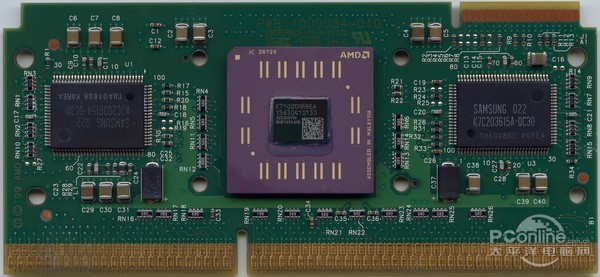
The CPU worth remembering: Athlon 1000, not only because of its number one, but also because it represents the unique design of the year.
At the same time, the Athlon processor also created a record, that is, the capacity of the first-level cache refreshed the record at the time - separate 128KB 2-way associated cache, and 512KB of L2 cache, plus the frequency at the time suppress Intel Not to mention that AMD has always been a cost-effective tradition. So the first generation of Athlon is beautiful.
The second generation Athlon: Codename Thunderbird
On June 5, 2000, AMD won the championship and released the Thunderbird core Athlon processor, which was popularly known as Thunderbird for its core English meaning. The series of Athlon processors are manufactured in a 0.18 micron process and are the first to use the more advanced copper interconnect technology, but they use a less advanced ceramic package.
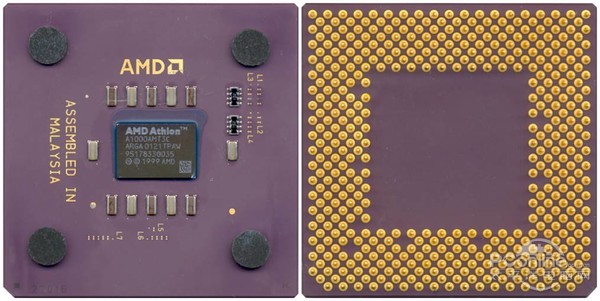
Thunderbird Athlon regression stitch design
This series has two FSB models of 100 MHz and 133 MHz, with frequencies from 650 MHz to 1400 MHz, with 256 KB full-speed L2 cache, using the Socket A interface, which is consistent with Intel, abandoned the huge slot, and return pins. .
The name of this generation of Thunderbirds is still the same as the previous generation, namely Athlon+ frequency figures. Because of the coincidence of frequency and K7 plus different FSBs, the model after 1000 MHz is also added with the suffix of B or C to distinguish.
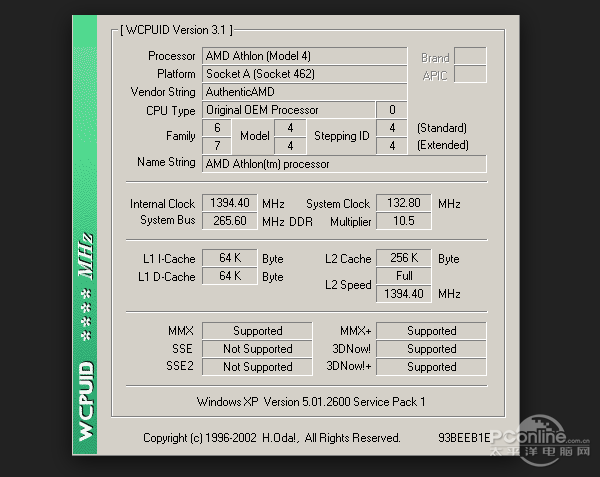
Previously everyone used WCPUID, a non-existent software, to view CPU information.
The performance of the second-generation Athlon is still on an equal footing with the Pentium III of the copper mine architecture. At the time, Intel was not a fuel-efficient lamp. The Pentium III Turin III was introduced later and the revolutionary Pentium 4 was launched at the end of 2000. Slightly backward Athlon. However, due to support Pentium 4 upper position, the desktop Latin Latin Pentium III died, unfortunately. This also gave AMD a respite from its next-generation architecture.
Peak height: Athlon XP
Active time: October 9, 2001 to December 2004
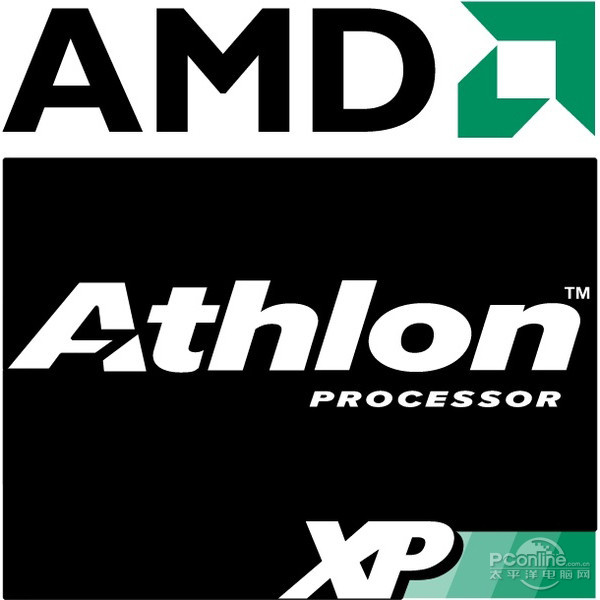
Athlon XP
Athlon XP, the Chinese name for Athlon XP. AMD improved Thunderbird Core's Athlon, and released the Athlon XP of Palomino, Thoroughbred, Barton, and Barton's simplified version of Thrton. It also uses the Socket A interface and switched to a more advanced OPGA package. . After the K5 era, AMD reused the PR value to standardize processor performance. At the same time, Athlon MP's product line was only used in the non-DIY hardware field, so we did not introduce it.
The first generation Athlon XP: codenamed Palomino
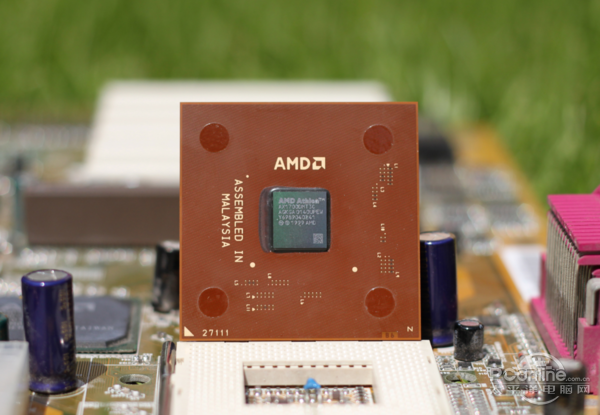
Palomino Athlon XP, DIE of the Square is a feature of this generation
For the understanding of frequency and performance, AMD and Intel began to part ways. It has already been mentioned that Willamette's Pentium 4 started the way of frequency hegemony, and AMD is still making minor changes and launching Palomino's Athlon XP. XP's name was a hot spot for Windows XP at the time.
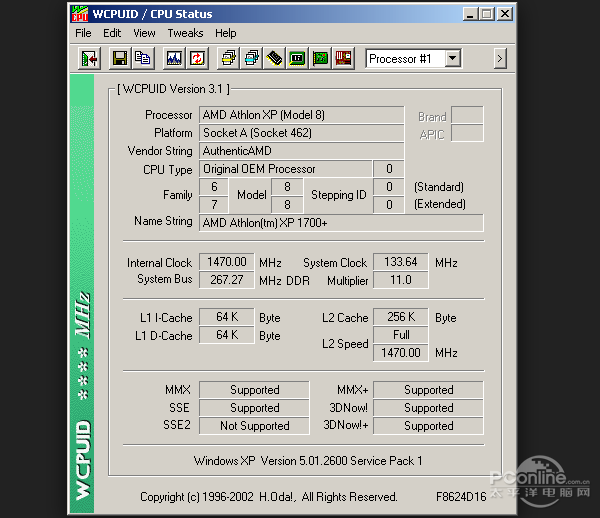
Athlon XP 1700+, the protagonist of the mainstream CPU market in the first half of 2001 to 2002
The Palomino Athlon XP is manufactured on a 0.18-micron process, uses a 133 MHz FSB, has a full-speed L2 cache of 256 KB, and still uses the Socket A slot. This series of PR values ​​is between 1500+ and 2100+, and the actual frequency is 1333 to 1733 MHz, respectively.
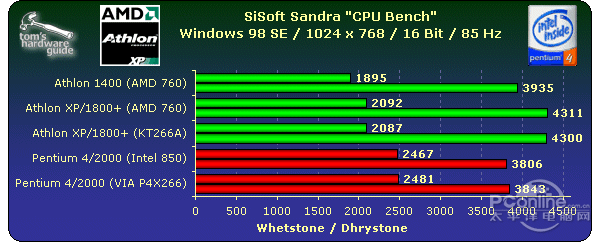
According to foreign media evaluations of the year, Palomino Athlon XP easily eliminates high-frequency P4 processors
The design of the integrated superscalar floating-point unit, compatible with the SSE instruction set, made the performance of the Palomino Athlon XP a shock to the industry at the time. Because people first saw Intel's mainstay P4 processor hit so hard, even if Intel later introduced the 130nm process Northwood P4, under the long and inefficient pipeline drag, starting the highest frequency of 2.0GHz Athlon XP 1900+ hit the ground to find teeth, in addition to commercial applications, all Athlon XP technically knocked down.

The Heat of Palomino Athlon XP Makes Everyone Realize the Importance of Third-Party Heat Dissipation for the First Time
In all fairness, Palomino Athlon XP is the author's first CPU in the history of DIY. Speaking off topic, I read a magazine's 2002 evaluation of the first round of AMD's performance on the entire family surrounded by Intel CPU suppression, I still remember. From the Palomino Athlon XP generation, AMD CPUs are labeled with the conscience of gaming performance. However, due to the increasing frequency of the 180nm process, the only drawback of the Palomino Athlon XP was the terrible heat.
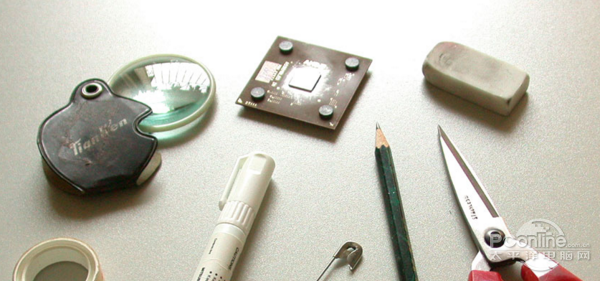
Palomino Athlon XP Starts Dashing Crack Times
By the way, the pencil Dafa black technology that began with Athlon unlocked the multiplier, and the Palomino Athlon XP generation was finally blocked by AMD. Although at the time Palomino and later Athlon XP were reported to successfully unlock the multiplier, the success rate was not high and there was also a risk of burning the hardware. As a result, Athlon XP's overclocking gradually converged on the ultra-Float. However, even if it still does not diminish its overclocking charm, Athlon XP 1700+ overclocked to 2700+ abound. Not only does AMD and Intel also have history for the first time to achieve a CPU with an overclocked frequency of 1GHz. During that period, it was a period of overclocking.
The second generation Athlon XP: code name Thoroughbred
Palomino Athlon XP is like a wild horse that is dislocated and has a hot temper. In order to calm down, the 130nm process becomes more and more important. At the same time, Northwood P4, under the support of 130nm, has a tight frequency with the characteristics of an ultra-long pipeline. P4, who will work hard, will soon regain its leading position in performance.
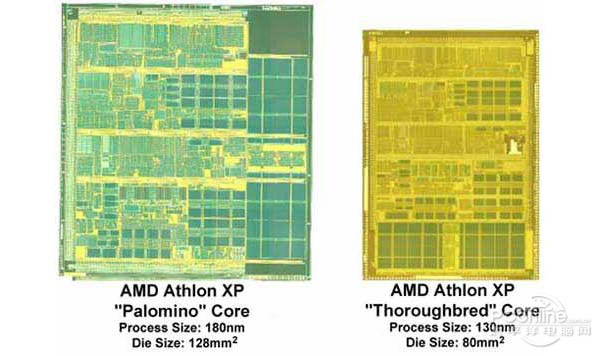
Thanks to the 130nm process, the core area of ​​the Thoroughbred Athlon XP is reduced
In June 2002, AMD finally introduced the Thoroughbred Core Athlon XP, which uses a 130nm process to reduce power consumption. However, the internal circuit has not undergone much improvement. It is still 256 KB full-speed L2 cache, and there is no improvement in performance compared to the Palomino Athlon XP.
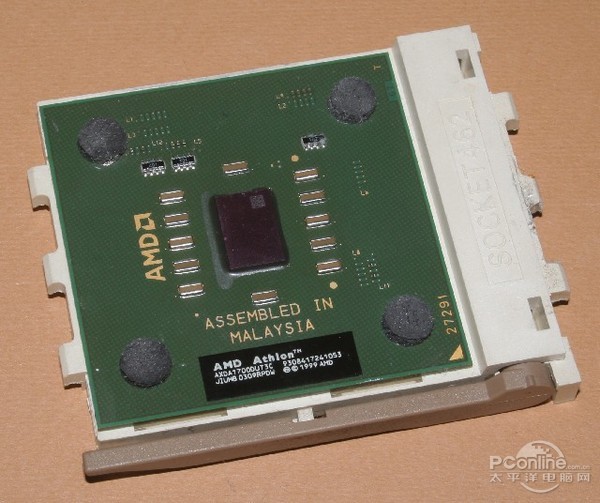
Thoroughbred Athlon XP 1700+
However, the 130-nanometer process encountered difficulties in the early stages, so the high frequency of the Thoroughbred Athlon XP was delayed by a large number of shipments. It was not until November 2002 that a large number of low-frequency Athlon XP 1700+ and 1800+ were commercially available.

At the time of 133MHz FSB Thoroughbred Athlon XP overclocking ability is not bad
The real strength of Thoroughbred Athlon XP is the B0 stepping version. The B0 version has two FSB models at 133 MHz and 166 MHz. The PR value is between 1700+ and 2800+. The B0 version 1700+ and 1800+ have only 133 MHz FSB. Because of the lower FSB, 130nm process technology brings lower heat and power consumption, making the two CPUs very capable.
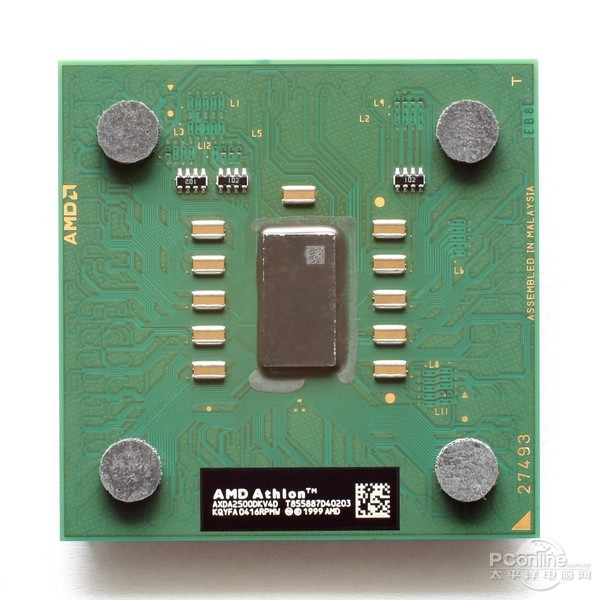
Thoroughbred Athlon XP 2500+ with 166MHz FSB
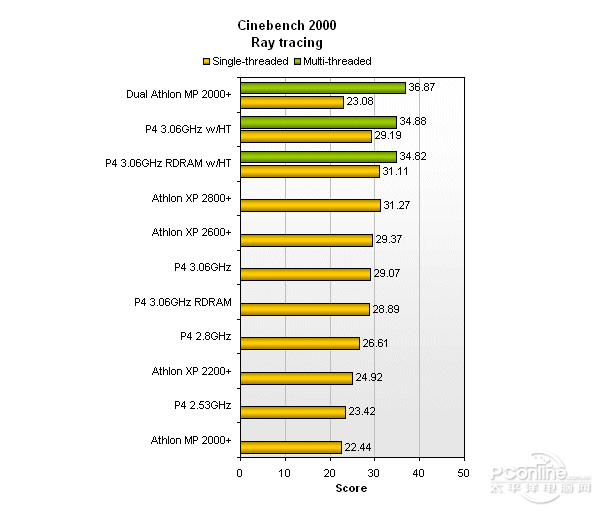
The lagging behind AMD's unchanging architecture has allowed the Pentium 4 performance of the frequency to catch up and surpass.
With no changes to the architecture, the new generation of Thoroughbred Athlon XP, with its frequency boost, was a bit too weak compared to the 3.06GHz P4 Hyper-Threading processor at the time. However, with AMD's traditional price strategy, the low-end Thoroughbred Athlon XP reached a price below $ 500, once almost completely suppressed the shrinking Celeron processor in the retail market.
Third Generation Athlon XP: Barton
"General Patton" is here! Where is the applause of old DIY players?
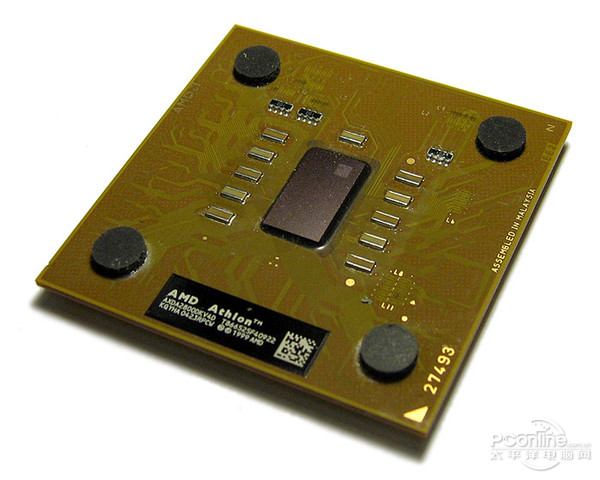
"Barton" Athlon XP
The third generation of Athlon XP is also the last generation of Athlon XP, which is also the last glory of Athlon XP. Due to the delay of the Thoroughbred Athlon XP, AMD is more cautious in R&D at the new core, and will be launching until the 130nm is more mature and more productive.
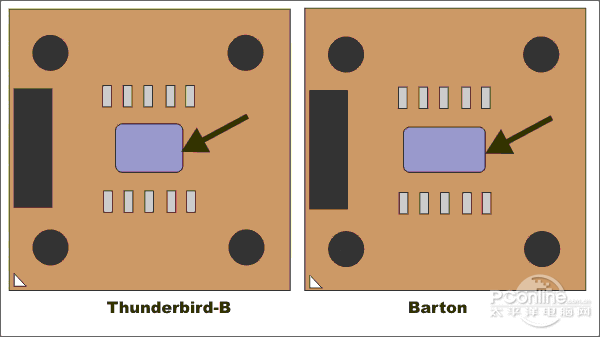
Barton’s core area is bigger because of the doubled level of L2 cache
On February 10, 2013, Barton was born. It is still manufactured on a 0.13-micron process, with a full-speed L2 cache of 512 KB and models with two FSBs of 166 MHz and 200 MHz. The PR value is between 2500+ and 3200+.
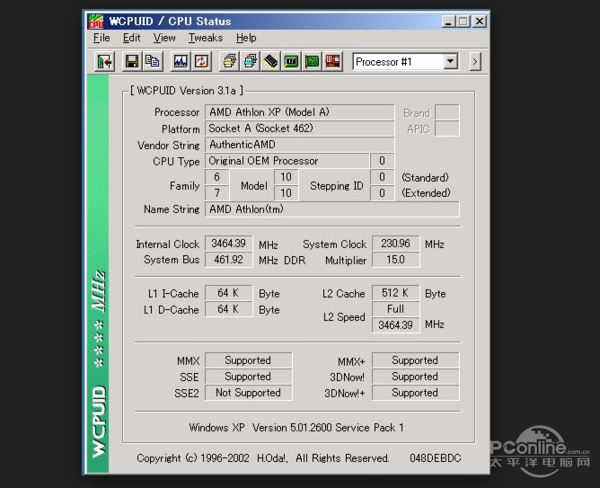
Barton can be described as a phenomenon-level overclocking artifact at that time, the media at the time also rushed to report
Among them, Barton 2500+ has become a phenomenal overclocking artifact. With 166MHz FSB, without changing the cooling conditions, just one click, 166MHz stable overclocked to 200MHz FSB, transformed into Barton 3200+! Mid-range price, easy overclocking performance after the P4 top product. All of a sudden, the full computer city is Barton's echo. Prior to Athlon 64, Button was the last madness of Athlon XP.

Although doubled the secondary cache, but Patton still lost the Pentium 4 UHF, leaving only the cost-effective selling point
In contrast, because Barton 2500+ is too classic and too good, Barton's high-end CPU product line sales have been seriously affected. However, as a DIY player, Who Cares?
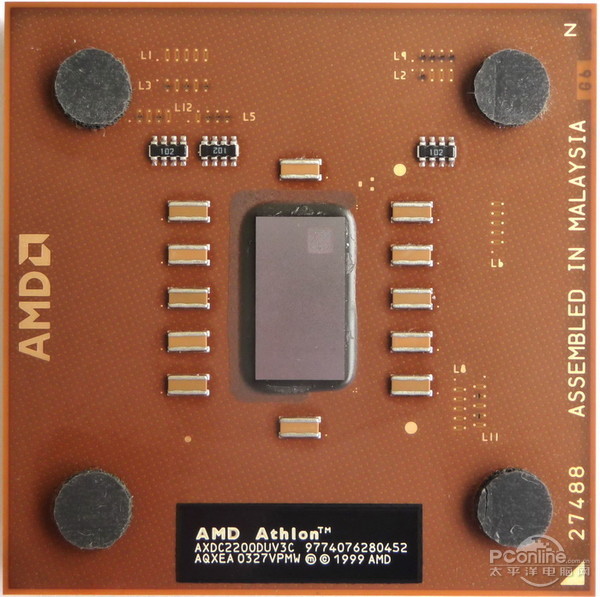
Thoron Architecture Athlon XP
In addition, in order to update the low-end product line, AMD introduced Thoron's Athlon XP, which was simplified on the basis of Barton. The same 0.13-micron process, with 133 MHz FSB, but with only 256 KB full-speed L2 cache, there are 2000 +, 2200 +, 2400 + three models.

Two characteristics of cost performance and overclocking, laying the foundation for AMD's subsequent CPU development
In general, Athlon XP is the beginning of AMD’s corporate image as a conscience. Cost-effective and overclocking, so that the DIY players at the time to play pleasing. At the same time, the direction of R&D for practical applications of users has laid a foundation for the brilliance of the next generation of processors.
A ride away: Athlon 64
Active time: September 23, 2003 to May 2008
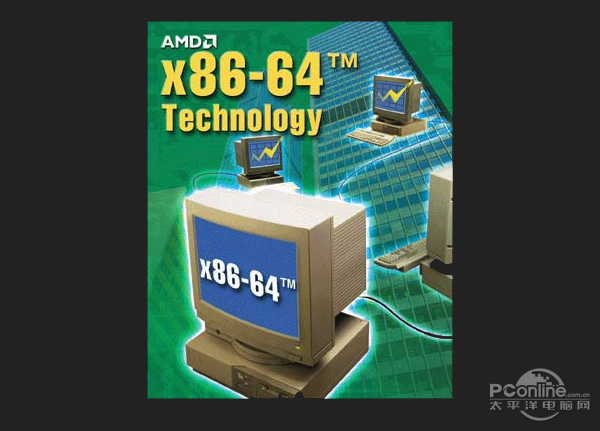
AMD rushes to catch x86-64 technology
After the Athlon XP era baptism, let AMD know that pure performance competition can not destroy the foundation of Intel's huge channels and markets, and it must take the changes in the bottom to promote the wind direction of the entire market. Grasping the 64-bit addressing operation that was initially revealed at the time, different from Intel's IA-64 instruction, AMD chose the x86-64 instruction with high compatibility. Since the beginning of R&D, it has attracted much attention.
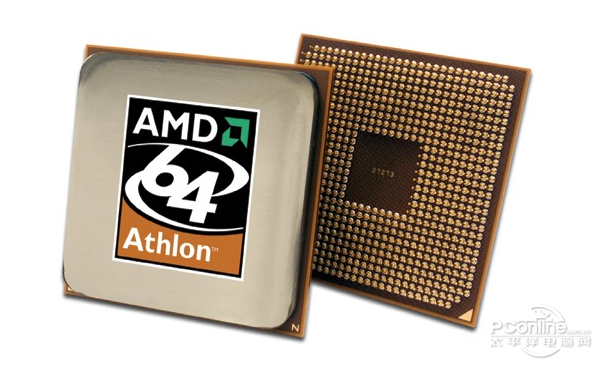
Athlon 64
Finally on the 15th birthday of the author, that is, September 23, 2003, the K8 architecture turned out to be Athlon 64, which is Athlon 64. The x86-64 technology took the lead for the first time in AMD's history of technical competition for more than 30 years, breaking the image of AMD as a technology follower and imitator, using a 64-bit processor to prove its strength, and a full-scale counterattack battle. Now. The arrogant Intel faced the fact that compatibility is everything, once again walking behind AMD, and using the x86-64 instructions in subsequent P4 processors.
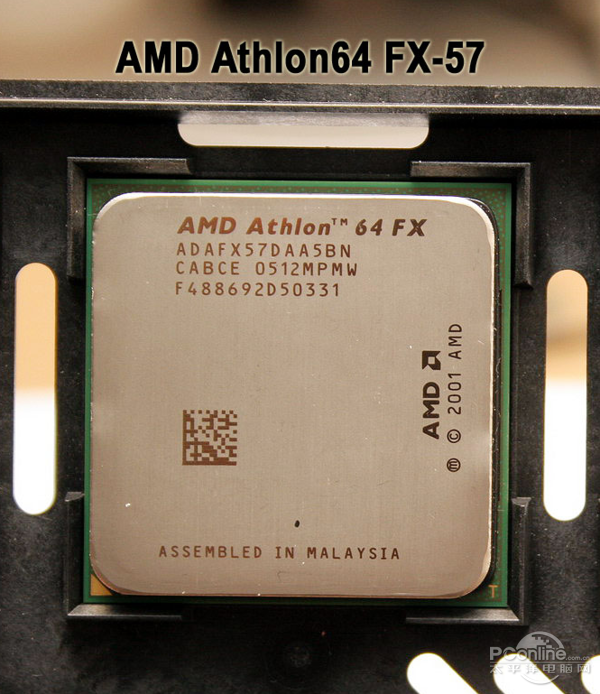
After years of absence, AMD finally has a flagship product line Athlon 64 FX series
The first generation of Athlon 64 is divided into two versions: Athlon 64 and Athlon 64 FX. One of the innovations is that the CPU has an internal memory controller that directly reads and writes data in memory, thereby minimizing memory latency. The interfaces are Socket 754 and Socket 940 respectively. The biggest difference is that the former only supports single-channel memory, while the latter supports dual-channel, and it faces the mainstream and high-end fever markets respectively. At the same time, the Athlon 64 is the first time that AMD's consumer-grade CPUs have been designed with a thermal cover, and it also supports Cool'n'Quiet technology, which is much lower than Athlon XP's heat generation.
Due to product positioning, compatibility, and overclocking potential, the 2013 Athlon 64 is notorious for its DIY field. Only top-level CPUs such as the Athlon 64 FX are distributed around the media and the local community.

The second generation Athlon 64 unified to Socket 939 slot
With the deepening understanding of 64-bit computing, consumers are urgently demanding the popularity of 64-bit processors. At the same time, AMD needs to adjust its market strategy to cope with the P4C performance improvement of the 200MHz FSB. In 2004, the Athlon 64 series adopted a new market strategy, introducing the Socket 939 unified 940 and 754 interfaces, supporting dual channel memory, reducing the price, and introducing more models to complete the product market. At that time, Intel's Prescott P4 became a devil, becoming synonymous with high fever and low energy. Still taking the PR value line AMD, with a 64-bit effect and high cost performance, won the market full of red.

Athlon 64 in the era of Venice leads the era of universal overclocking
In 2005, the CPU market process was developed to 90nm. AMD finally seized the opportunity to support the replacement and created the classic series of the Athlon 64 era: Venice. Less than 2GHz Athlon 64 can match the 3GHz P4, showing its architectural advantages. Among them, the overclocking king represented by Athlon 64 3000+, advanced process and mature architecture, and impressive power management also have high cost-effectiveness, setting off another wave of overclocking and becoming the mark of that DIY prosperity.
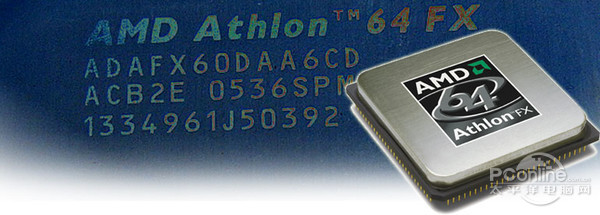
Athlon 64 FX 60
On high-end processors, the Athlon 64 FX evolved through FX-53, FX-55, FX-57, and FX-60 (dual-core), and surpassed Intel P4EE in game performance, daily use, etc., which can only be handled in the media. The 3D rendering part maintains its advantages in application, so AMD is sitting on the throne of performance for more than two years. However, its price is also constantly rising, up to 999 US dollars. The amd of the year was like the current Intel, and the price also rose after gaining technology leadership. After all, the capitalists.
Double City Mark: Athlon 64 X2
Active time: May 2005 to June 2008
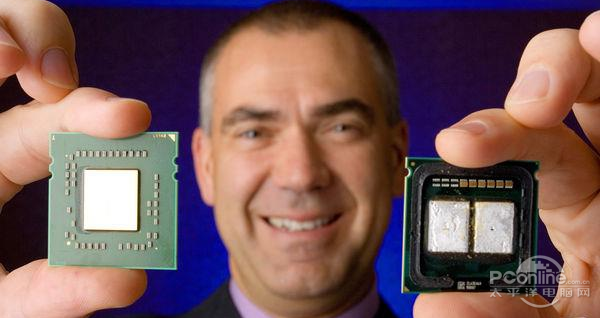
AMD set off a discussion of true and false dual-core at the time
With Intel on May 26, 2005, AMD released the first dual-core CPU, Pentium D, on the desktop. The CPU world opened the era of nuclear war, and the theory of frequency supremacy declared bankruptcy. A week later on May 31, 2005, AMD took out its own dual-core Athlon 64 X2 and provoked the then famous "true and false dual-core" remarks, claiming that Intel's so-called Pentium D is just a glue dual-core, and itself It is true dual-core that integrates two physical cores on a silicon chip.
Manchester Athlon 64 X2
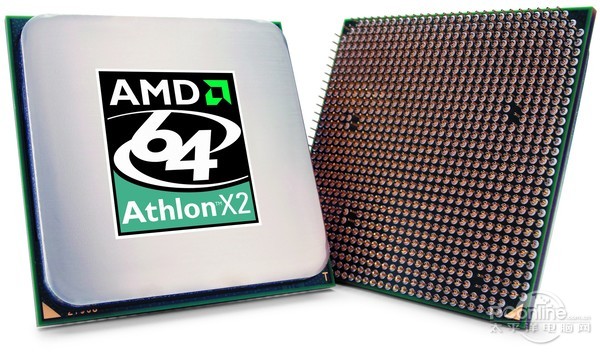
Athlon 64 X2
Athlon 64 X2 takes Manchester's code as the mainstream and its Toledo code as the high-end to open its dual-core market. The gap between the two is reflected in the difference in L2 cache capacity. The PR value range is 3800+ to 4800+. We know that at that time Intel no longer introduced the 4GHz processor, so the PR value at this time is just a code that distinguishes the performance level. At the same time, the first Athlon 64 X2 is the final show of the Socket 939 slot.
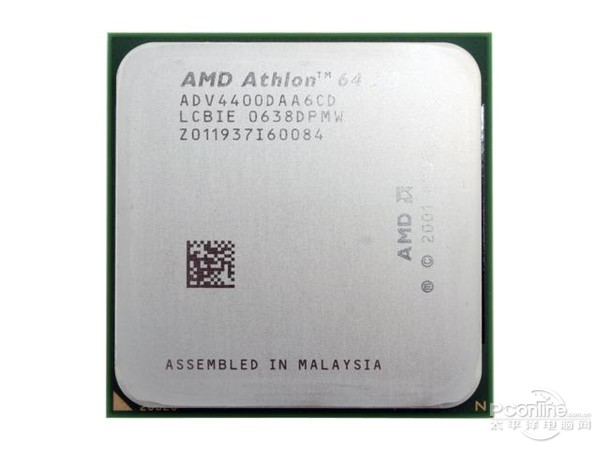
Athlon 64 X2 4400+
Since the core power consumption is lower than that of the Pentium D processor and the performance is outstanding, the processor does not have to go through the North Bridge like the adversary when it reads the memory. At that time, it became the most performance x86 processor architecture.
Windsor Athlon 64 X2
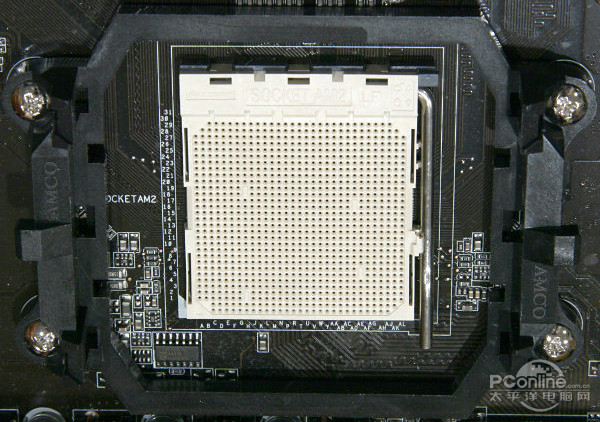
Socket AM2
On May 23, 2006, with the launch of the new Athlon 64 X2 codenamed Windsor, AMD brought us a new socket, the Socket AM2. Contains 940 pins and supports dual-channel DDR2 SDRAM, but the pin arrangement is not the same as Socket 940. Windsor's Athlon 64 X2 has a PR range of 3600+ to the black box version of 6400+ (adjustable multiplier). The span is very rare.
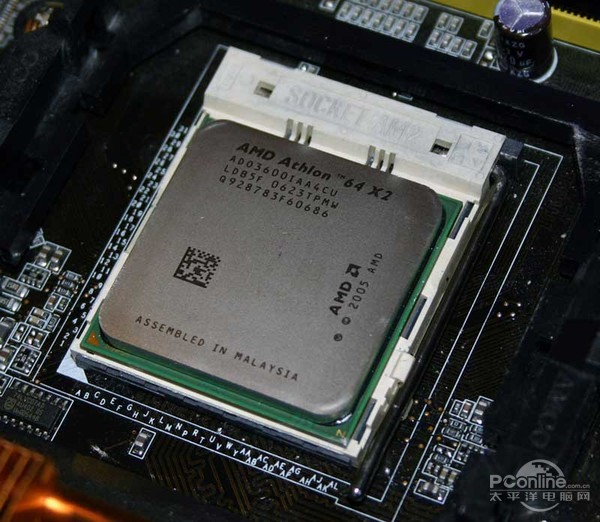
The Athlon 64 X2 3600+, which was quite well sold at the time
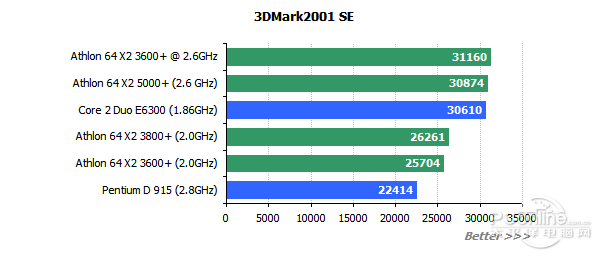
After overclocking performance has been greatly improved
Windsor's Athlon 64 X2 brings great products to the mainstream market, such as the Athlon 64 X2 3600+, which was very popular in the mainstream market at that time. Good value for money, and good overclocking capabilities, from 2.0GHz overclocked to 2.6GHz is not a problem with the late launch of the X2 5000+ performance is equal.
Brisbane Athlon 64 X2
In 2006, we all knew that Intel's Core 2 processor officially announced the beginning of the Empire's revival, and also brought the 65nm process. At the time, AMD was also aware of the increase in difficulty. At the same time, AMD was indifferent to eating ATI. As time went by, people began to worry about whether AMD could eat up. Fortunately, at the end of 2006, the 65nm Brisbane Athlon 64 X2 was officially launched.
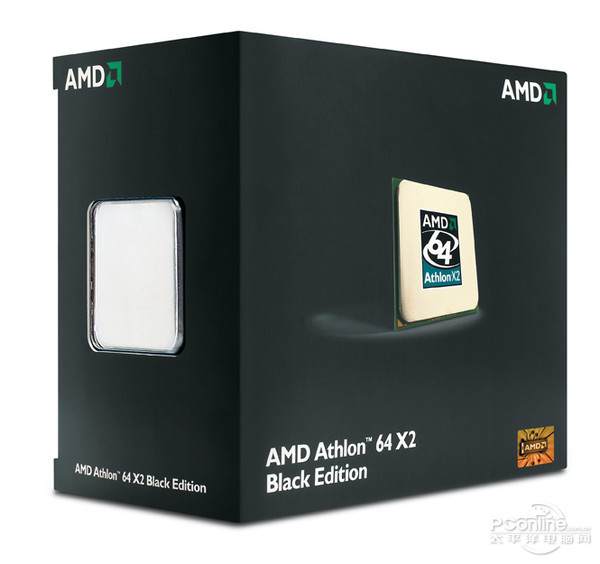
First AMD Black Box Processor
In the strong invasion of Core 2, Athlon 64 X2 has higher frequency, lower power consumption, and better overclocking performance with the help of a 65-nm process, but it still has no power to face the opponent. AMD then launched a time-tested cost-effective strategy and black box mainstreaming strategy. Another overclocking artifact that has always existed in CPU history, Athlon 64 X2 5000+ black box version was born in this period.
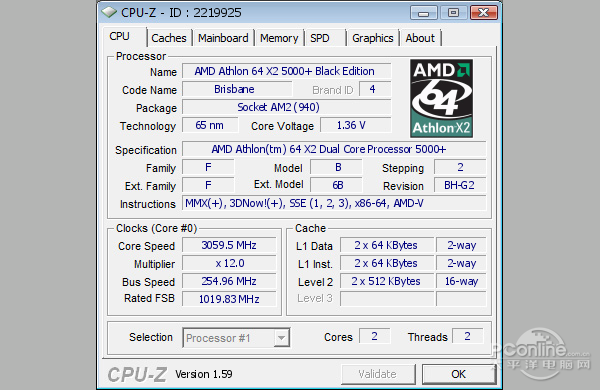
At that time, the overclocking ability of the black box processor 5000+ did not disappoint everyone.
With adjustable frequency multiplication, plus a lower heat output from the 65nm process, the Athlon 64 X2 5000+ can easily adjust the frequency to 3000MHz to reach the level of the X2 6000+, a free lunch with a sense of accomplishment with hands-on, Naturally attracted an overclocking storm. The officially approved frequency multiplier adjustment, on the one hand, benefits DIY players, on the other hand, it seriously affects the sales of high-end products, but it is also AMD's reluctant move in the face of competitive pressures.
Sunny Days: Haolong Active Time: November 19, 2007 to February 2009
Since the launch of Core 2 Duo, Intel’s strategy for enhancing its performance and creating multi-core competition has pushed AMD’s momentum in the high-end market. AMD needs new architecture products to fight back. AMD fans who have been nurturing for many years are also looking forward to AMD's response. After all, the usual glory is really profound. AMD also decided to put the K10 architecture against Intel's Core 2.
Unfavorable
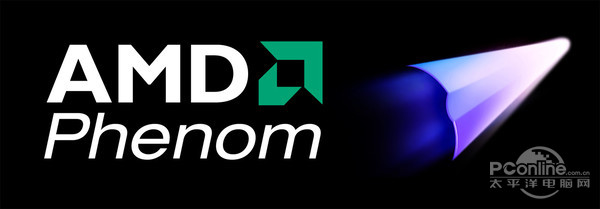
Dragon
On November 19, 2007, AMD released two Phenom quad-core processors, replacing the classic Athlon title, to create a classic in the four-core era. The official Chinese name for the Phenom processor in mainland China is "Nine Dragons."
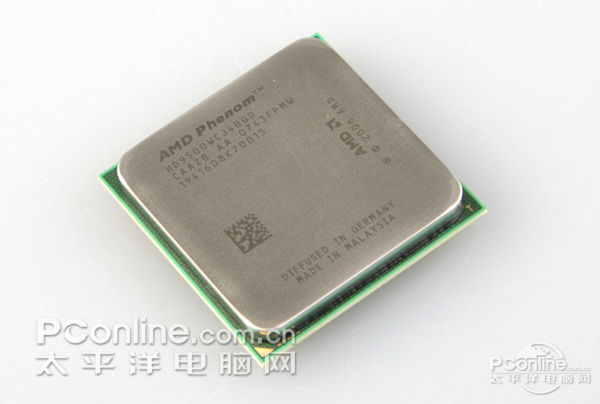
Phenom 9500, first tested by PConline at the time
The first models are the Phenom 9500 and 9600. Compared with the previous generation Athlon 64 X2 processor, the other major difference is that the Phenom processor additionally integrates at least 2MB of L3 cache in addition to the number of cores. The original Phenom still uses the AM2 slot, and later transitions to the AM2+ of HyperTransport 3. Both are compatible with each other.
At the beginning of the four-core era, AMD once again set off a genuine four-core dispute. AMD claims that the Phenom 9000 series is a true quad-core processor, meaning that it contains four processing cores on the same chip, while Intel's quad-core processor, the Core 2 Quad, uses a multi-chip module (MCM). The two dual-core processor chips are placed on the same base, and then the two chips are connected to each other by Bus.
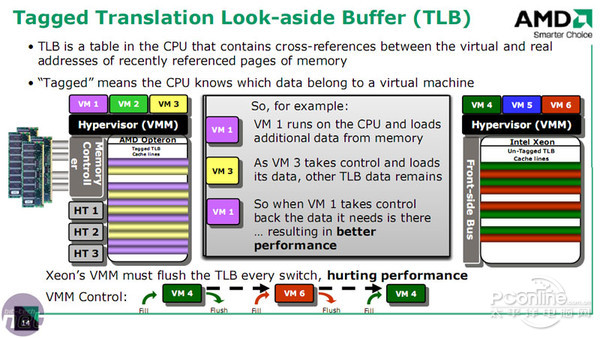
At that time caused a lot of criticism of the TLB architecture
Just when AMD was ambitious, a bug gave AMD a blue sky. In the Phenom B2 stepping core, a bug related to the TLB caused all current Phenom B2 stepping core processors to report errors and crashes. When the news came out, the market was awkward! After all, the system crash caused by the CPU itself is really long lived, and it is impossible to completely eradicate the method except the replacement of the CPU!
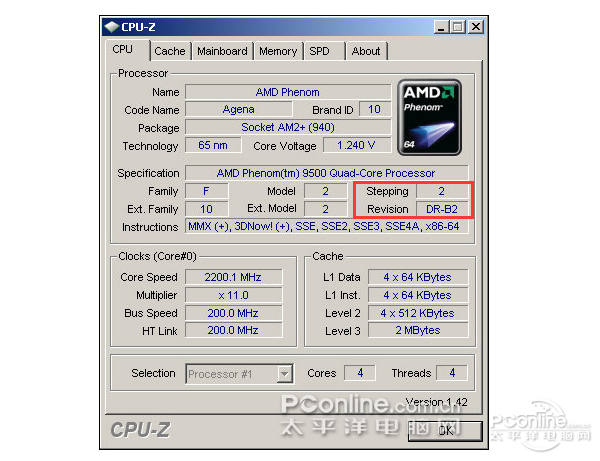
B2 steps have encountered TLB BUG
The natural consequence of mistakes is the disappearance of the market. Since then, AMD has been dragged by this bug and is busy repairing bugs. Not only can the Phenom 9700 and 9900 with higher clock rates not be introduced, but it can also cause severe memory delay effects even if fixed. Although in 2008 AMD released the B3 stepping core to correct TLB errors. However, after a wave of turbulence, the frequency of B3 stepping increases still cannot satisfy the market, coupled with the new problem of buffer failure in the cache. Making Phenom's premiere failed, it can be said that Phenom's structure is a major mistake in the history of AMD development.
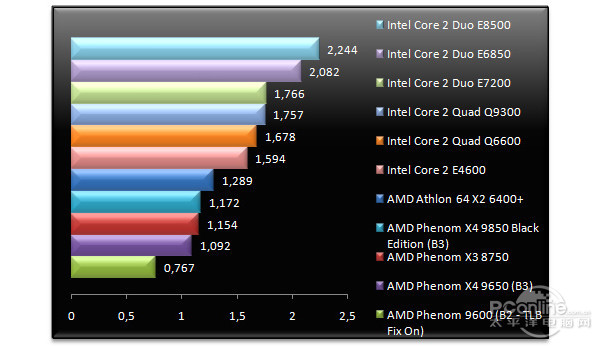
Such as the performance ratio, the heavy performance of the first generation of Xiaolong can not win the Intel, but also due to their own problems and can not play the performance
Not only that, because the process behind the competitors, making the power consumption higher, performance is also low, only the B3 version can barely compete with rival Intel Core 2 processor 65nm version. At this point, the balance of performance competition once again favored Intel.
Retreat
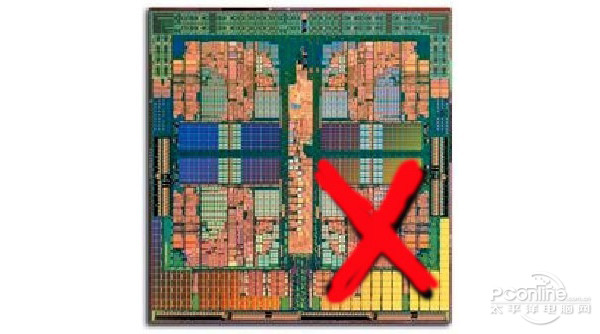
Shield off a core dragon X3
Missed high-end market AMD, coupled with the lag in 45nm process development at the time, so once again using a cost-effective strategy. Seeing that Intel has only two core and four core processor sales, AMD saw the methodology of Tian Ji's horse racing. On March 27, 2008, AMD officially released the industry's first three-core processor "Phenom X3 8000" series, the new B3 Stepping's four-core "Phenom X4 9x50" series, as well as an energy-saving 9100e that consumes only 65W.
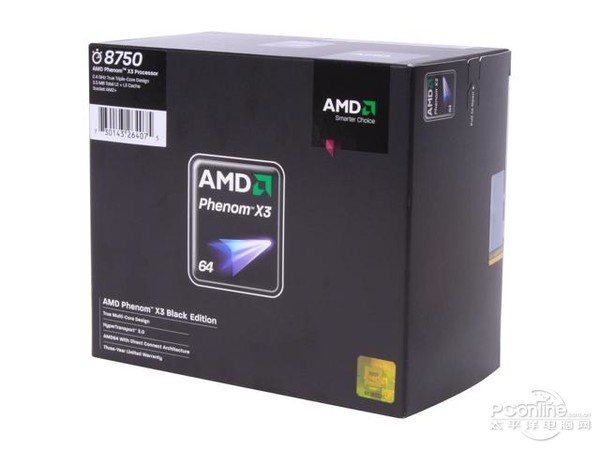
Xiaolong X3 black box version
At the same time, AMD also restored the naming of X4 with four cores and X3 with three cores. X4 and X3 are also added on the LOGO, which makes it easier for users to distinguish product types.
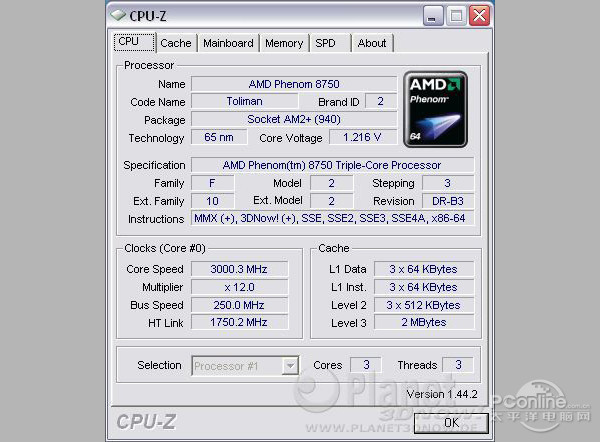
Overclocking performance and three more than two cost-effective to restore DIY player confidence (Figure from foreign media)
Through Tian Ji's strategy to seize the mid-market share, with 3> 2 primary school mathematics to carry out propaganda. In fact, with a good price/performance ratio, the Phenom X3 really did have an applause and an effect. Riding on this momentum, AMD will once again come up with a black box version, Phenom X3 8750 Black Edition black box version launched. Unlocked multipliers, so that players at the time tasted the dessert.
Rapid Retreat: Dragon II
Active time: January 2009 to April 2012
Reasonably speaking, AMD's strategy of avoiding horse racing is only to stop the bleeding for a short time. The warming up of the high-end market is the most important thing. The first thing to solve is the problem of 45nm lagging behind Intel, and then Phenom's reinvention to reshape the top image.
Phenom II X4
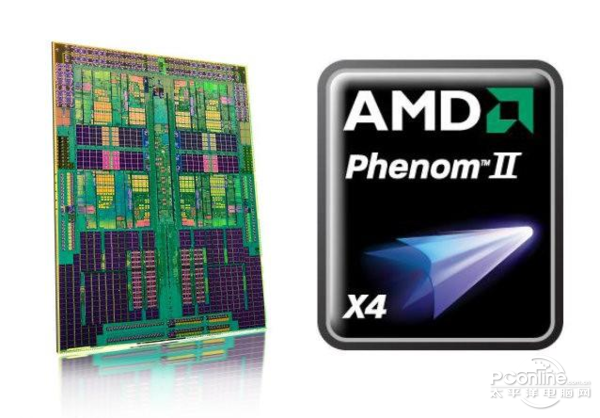
Dragon II X4
In early 2009, AMD finally gave the answer. AMD announced the 45nm Phenom II X4 processor at the CES exhibition on January 8, 2009, and announced the birth of Phenom II.
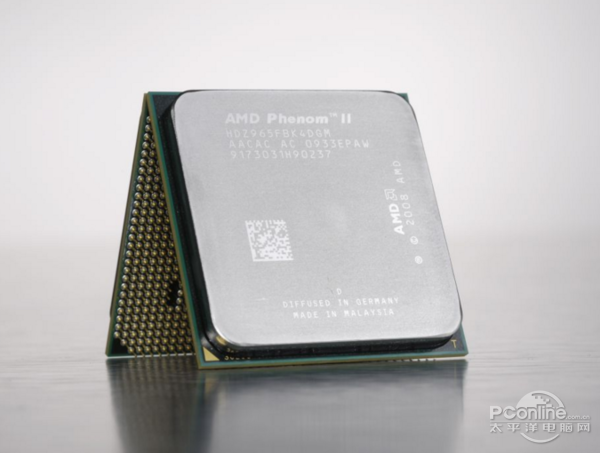
Dragon II II X4 965 CPU
The Phenom II X4 processor still uses the AM2+ socket. The first clock frequency is 2.8Ghz (X4 920) and 3.0Ghz (X4 940). The 45nm process solves the Phenom's problem of heat generation and power control. Good energy consumption ratio. In terms of specification improvement, Phenom II is based on the improved Stars core architecture, IPC (per clock frequency cycle number of instructions) is also optimized, built-in DDR2 memory controller, three-level cache increased from 2MB to 6MB, Cool "n'" Quiet technology Increase to 3.0.
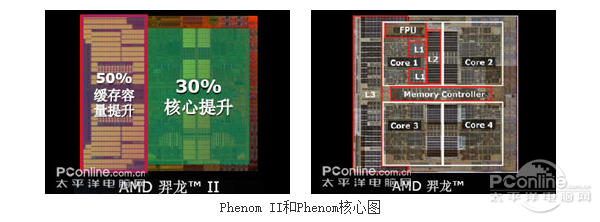
Real pile materials, in order to re-high-end competitiveness
Compared to the previous generation, the Phenom II X4 940 is completely away from the Phenom X4 9950. Regardless of application software testing or game performance testing, the Phenom II has a 20-30% overall performance. However, the Phenom II X4 is positioned at the market of 1,000 yuan to 2,000 yuan, so it still cannot compete with Intel's high-end market. As a result, AMD resorted to black box calligraphy again, and later launched a black box version to suck powder. At that time, the overclocking performance of the AMD Phenom II X4 955 was not bad, having reached a limit of overclocking 7GHz.

The most classic CPU of Xiaolong era: X4 955
The other classic aspect of the Snapdragon II X4 955 is its tenacious vitality. AMD's support for this product lasted until April 2012, making the Snapdragon II X4 955 ample supply on the channel, during which Intel released generation after generation of Core Duo. AMD’s strongest CPUs also went from quad-core Opteron to six-core Opteron to eight-core FX. The Fierce Dragon II X4 955 reduced prices and finally reached the 500-yuan market, compared to the quad-core FX and Quad at the same price. The performance of nuclear Athlon is almost a suppressive advantage, enough to rival i3.
Phenom II X3
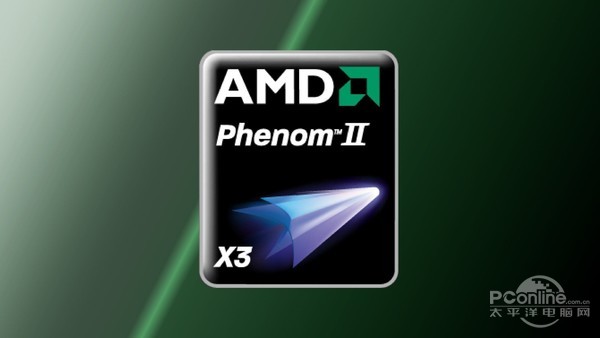
Three cores still appear in Phenom II
AMD continued to use a strategy with 3 greater than 2 in the Phenom II era. In February 2009, AMD released a new generation of Phenom II X3 710/720 triple-core CPUs for the mainstream market. The CPU uses an improved Stars core and an advanced 45nm fabrication process, giving it excellent performance. Shortly after the release of the Phenom II X3, there was an online rumors that the Phenom II X3 could open the fourth core of the shield. Subsequently, the rumors were confirmed and the CPU’s attention rapidly increased, causing a panic buying boom.
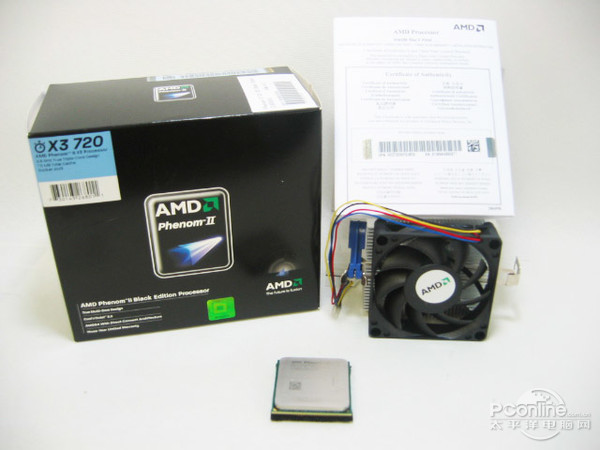
Black Box Edition of the X3 720
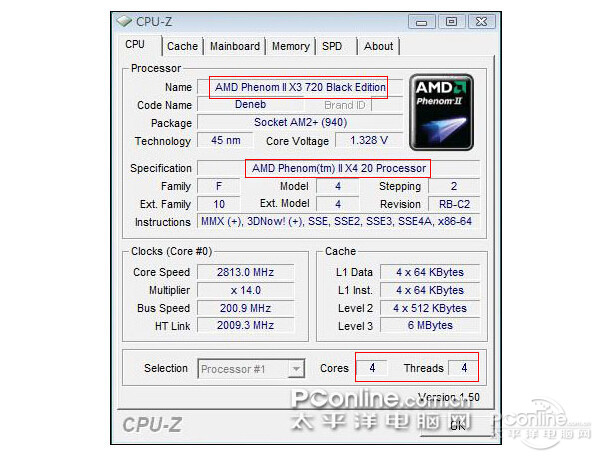
Open nuclear + open cache + overclocking, Phenom II X3 720 not only brings free lunch, but also give extra dessert
The Phenom II X3 720 opens up the trend of open nuclear. Can change the quad-core, but also overclocking, for users it is really a pie falling in the sky! Naturally this CPU became the classic product of the year. However, it has been unstable for a long period of time, and was later directly replaced by Athlon II. It can only be said that it is a generation of comparative cups. However, with high playability, the Phenom II X3 720 brings a true DIY flow.
Phenom II X6
The overall backwardness of the K10 is already a fact, and the development of the next-generation architecture is lagging because AMD is still digesting the acquisition of the then ATI. To solve the problem of performance competition, AMD can only take a simple and effective way, that is, the number of heap cores.
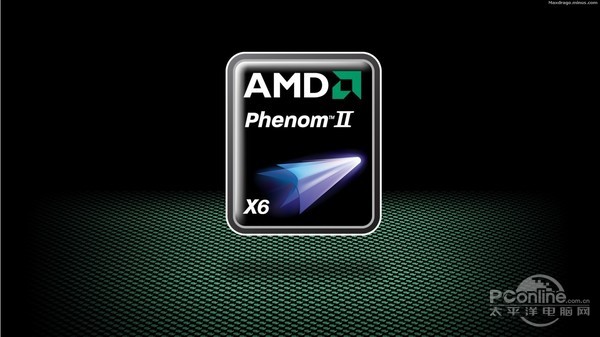
Phenom II X6 is the pinnacle of K10 but the fact is that the architecture has fallen behind Intel
In 2010, AMD finally released its first six-core CPU, the Phenom II X6 1000T series.
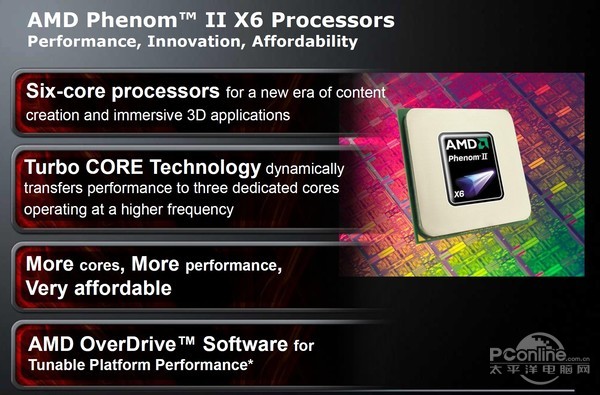
Phenom II X6 has many new features
Native six-core design, production process for the 45nm SOI, CPU micro-architecture and the Phenom II series as an improved Stars architecture (K10.5), using AM3 slots, support for DDR3 memory. In addition to having six cores, the most important improvement of the Phenom II X6 is the introduction of an acceleration technology, Turbo Core, which automatically adjusts the CPU frequency to accommodate environments that are not optimized for multithreading. Other specifications are consistent with the Phenom II series.
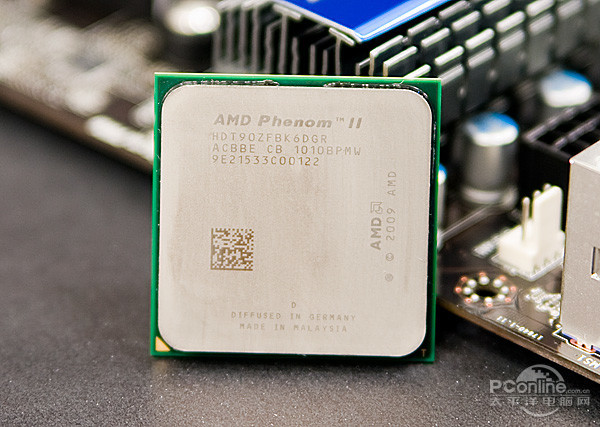
AMD Phenom II X6 1090T
At the time of performance, the Phenom II X6 relied on the advantages of 6 cores and 6 threads to easily defeat the traditional 4-core 4-thread CPU in many software optimized for multi-core and multi-thread CPUs. However, in the face of 4 core 8 threads, Phenom II X6 is still inferior. Still only test the price to win the market. AMD Phenom II X6 1090T black box version, is still the conscience and helplessness of AMD to retain A powder and overclocking players.
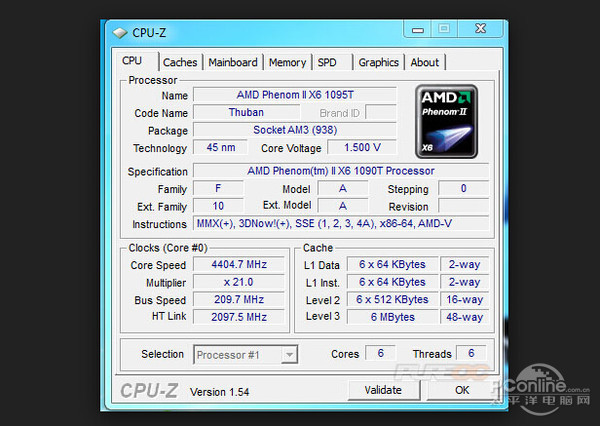
Black box version of Phenom II X6 still brings good overclocking performance (Figure from foreign media)
At that time, AMD had deeply felt the backwardness of the K10 architecture. Whether it is AMD itself or loyal players, it is looking forward to AMD's overall transformation. In 2011, the emergence of the new FX CPU did not save the hot AMD CPU market, but also announced the end of the "X Dragon" era.
Retired to the second line: Athlon X2
Active time: 2007 to 2009
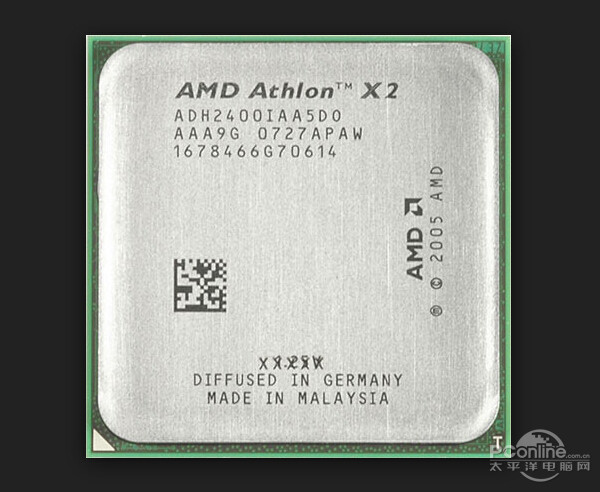
Abandon the 64 logo Athlon X2
Back in 2007, 64-bit processors in the CPU market were already quite popular. AMD believes that the use of 64 digits as a model to promote has become more of a move, so in the June 2007 launch of the Brisbane 45W BE power-saving version of the dual-core processor, the new product was renamed "Athlon X2", removing the "64" word, And use the new model, BE-2350 and BE-2400 low-power CPU, as well as in 2008 introduced the 4 series and 5 series of low-power CPU. The highlight is power consumption, which is only 45 W TDP. All worked in the mainstream market at the time.
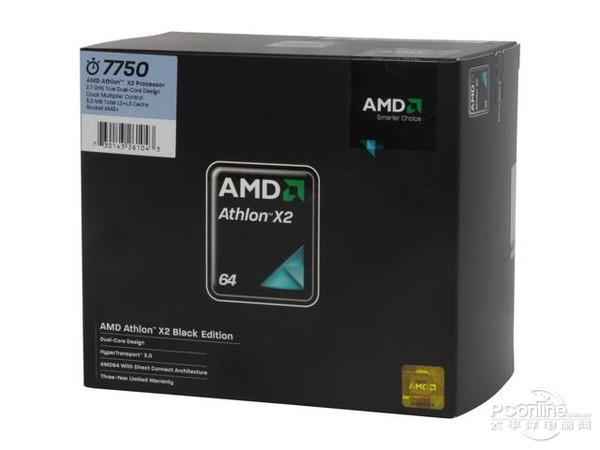
Phenom's simplified version of the Athlon X2 6000 series and 7000 series, black box products are the most worth buying
In the era of Phenom, AMD still did not forget the Athlon series. The original Phenom core shields the two Dies and turns them into dual-core products under the names Athlon X2 6000 Series and 7000 Series. At the same time, three black box products of 6500, 7750 and 7850 were introduced. Athlon X2 competed in the following market for less than a thousand dollars, but at that time the heat was caught by Core 2 Duo's low-end series and the Pentium series. The degree of concern was not high.
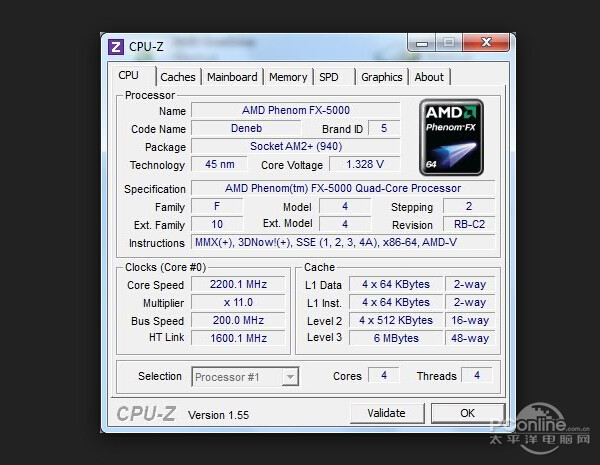
Athlon X2 5000, inheriting the will of 64 X2 5000+, distributing conscience pill for DIY players
In the 45nm Phenom II era, AMD continued to introduce the Athlon X2 series, the Athlon X2 5000 and the 5500 (note that it is different from the Athlon 64 X2 5000+). These two CPUs became the open nuclear artifacts at the time. With the easy setup, the Phenom FX-5000 and 5200 were transformed into quad-cores! Compared with overclocking, open core is more significant for improving performance. Together with the Phenom X3 at that time, a nuclear frenzy was created and many mainstream markets were regained on Intel.
Low-end glory: Athlon II
Active time: 2009 to 2012
After the launch of Phenom II, Athlon has nominally been the equivalent of mainstream product positioning. In synchronism with the second-generation Phenom, Athlon X2 was renamed and changed to Athlon II, which was released in the fall of 2009.

Athlon II X2, X3, X4, AMD's entry-level low-end CPU market effectiveness
Athlon II in the K10 era
The Athlon II series uses the AMD K10 architecture. Unlike the Phenom series, the Athlon II processors do not have an L3 cache, but increase the old 512KB L2 cache per core to 1MB per core (four cores still 512KB). In addition, Athlon II's dual-core products are all native designs. The Athlon II X2 is not shielded from the two cores of a quad-core processor. Therefore, the processor's thermal design power (TDP) is lower than that of the Phenom II series. The core architecture of the three-core Athlon II is also the same as that of the Athlon II X4 except that one of the cores is shielded as a market segment and named Athlon II X3.
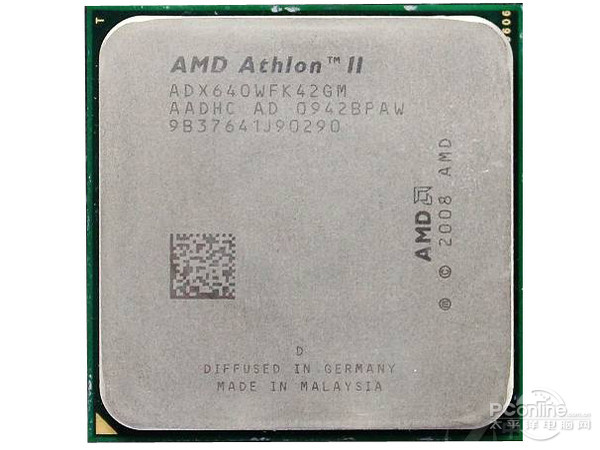
Athlon II X4 640T
Some Athlon II X4s are derived from the Phenom II's six-core series of shielded L3 caches. For example Athlon II X4 640T, so users can open the shielded core and open L3 cache by cracking method. As a result, Athlon II X4 640T immediately became a star product at the time! Simply go through the BIOS settings and you'll see a six-core AMD X6-1405T! This free lunch naturally caused waves in the mainstream DIY market at that time.
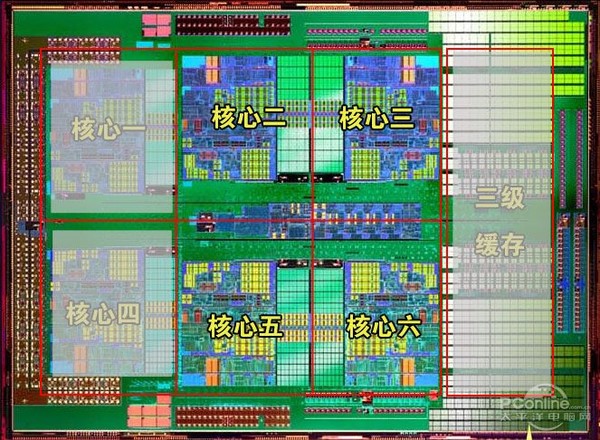
Athlon II X4 640T is derived from the Phenom II's six-core series shielded L3 cache
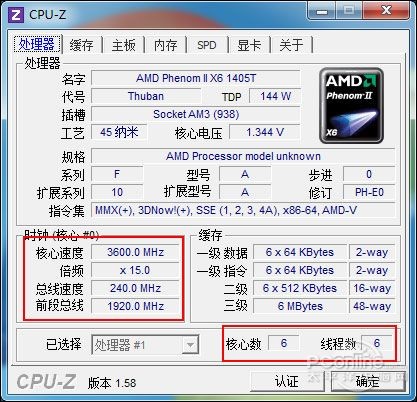

Openable nuclear + power overclocking, Athlon II X4 640 became the last one can play open core CPU
In fact, because the Athlon II era of castration is too severe, it is difficult to compete with Intel processors at the time. Only the Athlon II X4 640T, which can be opened, can be remembered by history in the era of Phenom.
Athlon II in APU Age
After AMD acquired ATI, the concept of integration proposed by the company finally came true in 2011. The APU was born many years ago, but it did not really bring about the wide application of the concept of integration. However, the integration market within a thousand dollars has become a hot topic. After ending the history of the K10 architecture represented by Phenom, AMD took the FX as the leading actor in the high-end market and took out the CPU part of the APU in the low-end area to carry out the armed entry-level mainstream CPU.
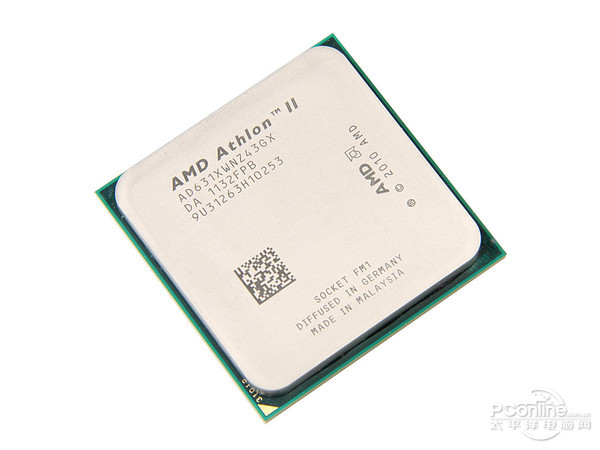
AMD Athlon II X4 631
Athlon II X4 631 is the product that was launched in the fall of 2011. Unlike the previous Athlon II series, the AMD Athlon II X4 631 is based on the Husky microarchitecture (modified version of the K10), using the latest 32nm production technology, native quad-core design, clocked at 2.6GHz, and each core has 1MB of L2 cache (It used to be 512KB) and it supports DDR3-1866 memory. The FM1 interface design supports only A75/A55 motherboards and is not compatible with AM3 AMD Athlon II X4 motherboards.
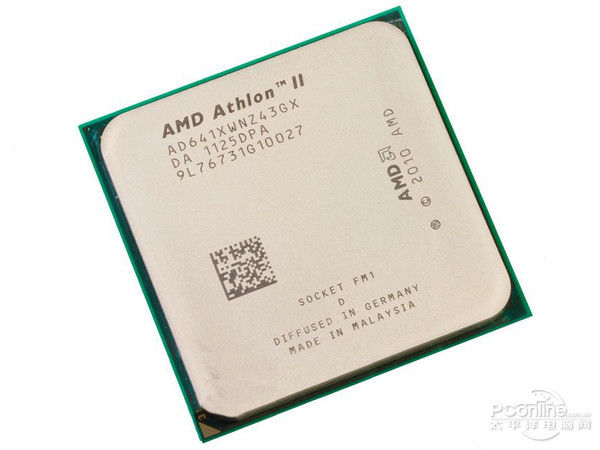
Athlon II X4 641
The price of four cores and less than 500 yuan has become a big hot product in the market, and it also puts a lot of pressure on the Pentium series that are fixed on dual-core and dual-thread. In 2012, AMD introduced the Athlon II X4 641. Compared with the former, the frequency of the Athlon II X4 641 was increased from 2.6Ghz to 2.8GHz, but the price was reduced to 400 yuan, and the price-to-performance ratio was once again raised to a new height! It became the star product of AMD CPU at the time.
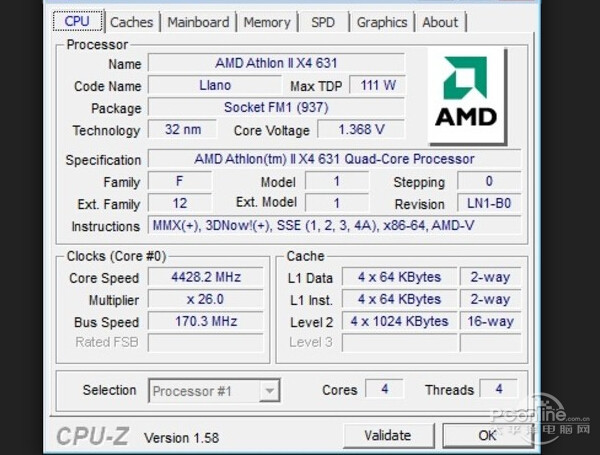
Athlon II X4 still maintains the tradition of power overclocking, except that AMD no longer offers the possibility of nuclear power.
At this point, the era of Athlon II is over.
Veterans die: Athlon X4
Active time: 2012 to date
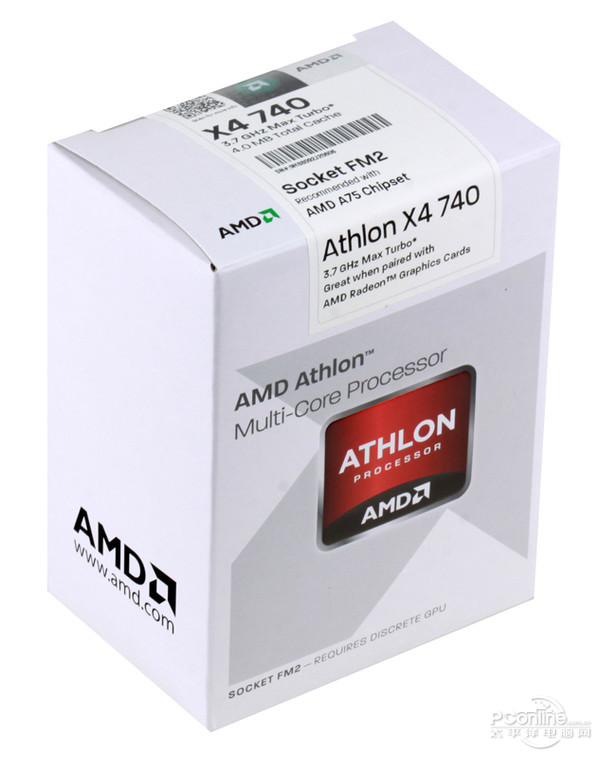
Changed the newly packaged Athlon X4
Interestingly, AMD was originally intended to abandon the "Athlon" and "Dragon" brand and righting the FX series, while FM1 version of "Athlon II" is only a "temporary worker" role, and even the product LOGO, packaging are Using the old version of the Athlon style, who expects to be "inadvertently", shielded the GPU unit's Athlon X4 631/641 and sold it so much! On the 2012 new generation AMD roadmap, Aeon has developed a unified LOGO and packaging box, and the classic Athlon brand has been retained.
Athlon X4 in the Pile Driver's Era
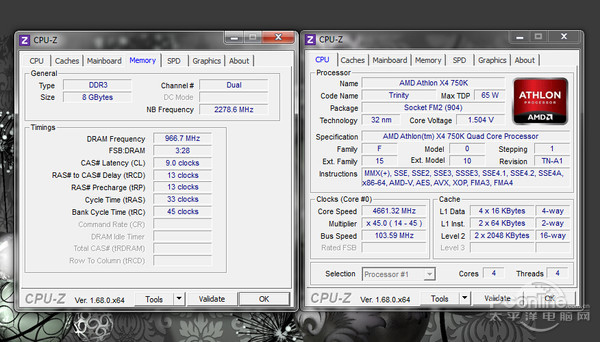
AMD Athlon X4 750K, freely adjustable frequency multiplier
Thus, the birth of the AMD Athlon X4 740/750K opened the era of the Athlon X4. Athlon X4 uses an FM2 interface and is not compatible with the previous FM1 platform. The internal CPU architecture has also undergone major changes. From the "primary quad-core" to the "two-module quad-core," it can be simply understood as an FM2 interface pile driver. However, the specification has been reduced. The TDP thermal design power consumption has also dropped to 65W/100W.

Do not say do not know, when the AMD Athlon X4 750K's real performance price ratio is the highest
å…¶ä¸ï¼Œ750K属于ä¸é”å€é¢‘的“Kâ€å—辈,那么超频性能自然是这款CPU最大的å–点,ä¸è¿‡è¿™ä¸€æ¬¡AMD Athlon X4 750K的超频幅度ä¸å€¼ä¸€æ。ä¸è¿‡ï¼Œ500元一下的定ä½ï¼ŒAMD Athlon X4 740/750K在入门CPU市场很有æ€ä¼¤åŠ›ï¼Œå£ç¢‘ä¸é”™ã€‚
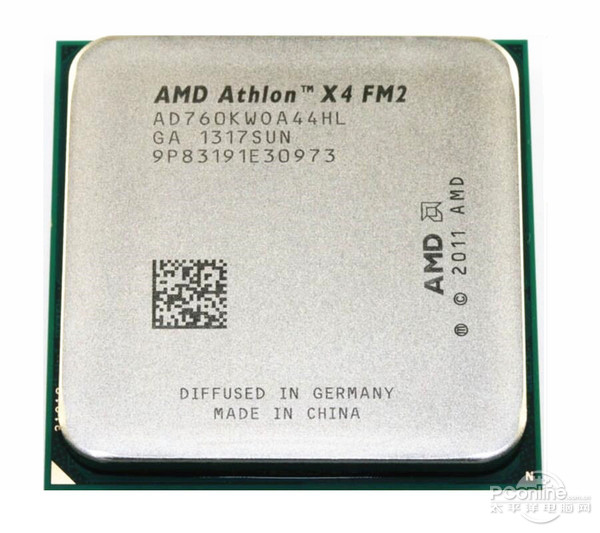
AMD Athlon X4 760K,给当年的奔腾åŒæ ¸å¾ˆå¤§åŽ‹åŠ›
自æ¤ï¼ŒAMD Athlon X4系列开å¯ä¸€å¹´ä¸€æ›´æ–°çš„节å¥ã€‚2013年推出了AMD Athlon X4 760K,相比750Kæå‡äº†é¢‘率,超频能力也有了很大的进æ¥ï¼Œè¶…到4.7GHzæ— åŽ‹åŠ›ï¼ŒåŒæ—¶ä»·æ ¼ä¾ç„¶å¾ˆæœ‰ç«žäº‰åŠ›ï¼Œè®©å½“时的奔腾ä¾ç„¶å¾ˆéš¾åšï¼Œåªå‰©ä¸‹åŠŸè€—的优势。毕竟是Athlon,毕竟是AMD一直以æ¥çš„金å—招牌。
压路机时代的速龙X4
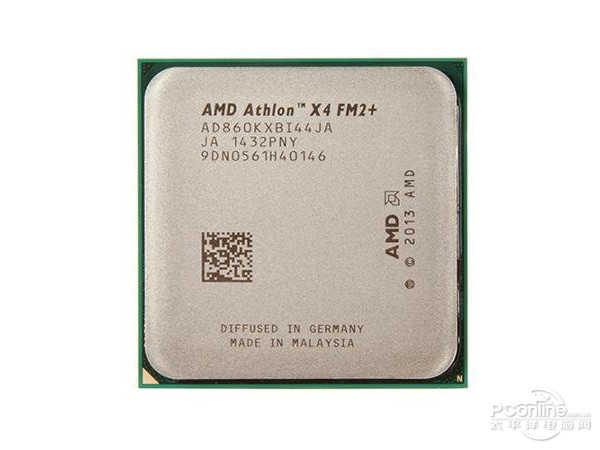
采用压路机架构的AMD Athlon X4 860K
2014年,Athlon X4 系列得到当时高端“压路机â€æ ¸å¿ƒçš„åŠ æŒï¼Œå–代了原æ¥äº†æ‰“桩机,åŒæ—¶ï¼Œä¹Ÿæ˜¯æ— ç‹¬æ˜¾æ ¸å¿ƒç‰ˆæœ¬çš„Kaveri A10 APU。型å·ä¹Ÿè¿›äº†ç™¾ä½ï¼Œæˆä¸ºäº†AMD Athlon X4 860K。接å£ä¸ºFM2+,支æŒA88/A85/A75ç‰å¤šç³»åˆ—主æ¿ã€‚处ç†å™¨é‡‡ç”¨åŽŸç”Ÿå››æ ¸å¿ƒè®¾è®¡ï¼Œå¤„ç†å™¨å¸¦æœ‰4MB二级缓å˜ï¼Œé»˜è®¤ä¸»é¢‘为3.7GHz,通过AMD智能超频技术,å¯ä»¥è‡ªåŠ¨è¶…频至4.0GHz。当时刚好是奔腾二å周年G3258å¤§è‚†å®£ä¼ çš„æ—¥å,但是å‡å€ŸAMD Athlon X4 860Kçš„å †æ–™ä¼˜åŠ¿ï¼Œå³ä½¿G3258超频了,也åªèƒ½å’ŒAMD Athlon X4 860Kä¸ç›¸ä¼¯ä»²ã€‚
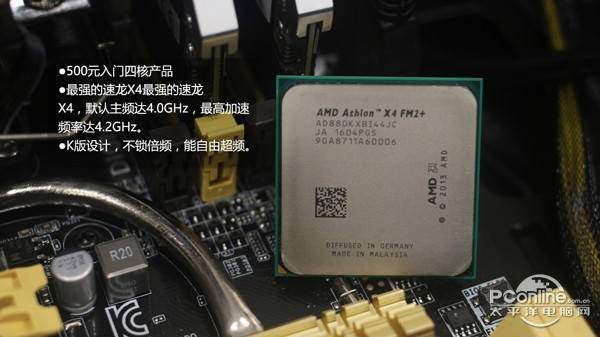
880Kï¼Œå°†å…¥é—¨çº§çš„å››æ ¸æŽ¨å‘新高度
2015年与2016年,AMD在500元以下市场乘胜追击,分别推出了AMD Athlon X4 870K与880K。
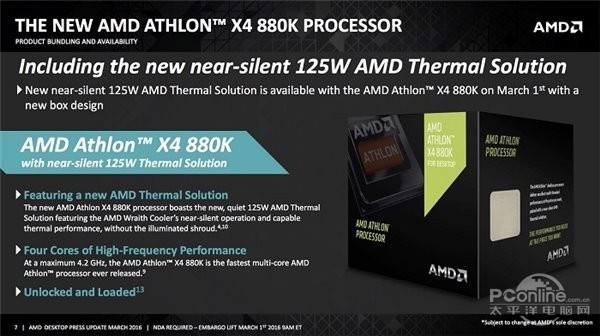
内置更给力的散çƒå™¨
å…¶ä¸880K,ä¸ä»…频率çªç ´äº†4.0GHz,盒装散çƒå™¨æ›´æ˜¯å’ŒA10系列(7870K)åŒæ¬¾çš„çƒç®¡ä¸‹åŽ‹å¼æ•£çƒå™¨ï¼Œä½“现出AMD在入门低端市场的诚æ„。
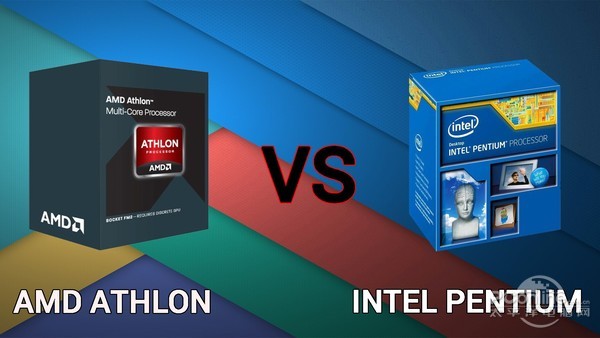
é”龙出现之å‰ï¼Œåªæœ‰åœ¨ä½Žç«¯é¢†åŸŸï¼ŒAMDæ‰èƒ½æ‰¾å›žåœºå
AMD Athlon X4 880Kç»™AMD带æ¥äº†å°‘有的认å¯ã€‚也给高傲的Intel敲å“了è¦é’Ÿï¼ŒäºŽæ˜¯åœ¨ä¸ƒä»£é…·ç¿æž¶æž„的奔腾系列,Intel终于èˆå¾—打开奔腾的超线程。很明显,这体现了竞争促进进æ¥çš„é“ç†ã€‚
è¹ä¸ªçƒåº¦ï¼šé€Ÿé¾™APU
活跃时间:2014年至今
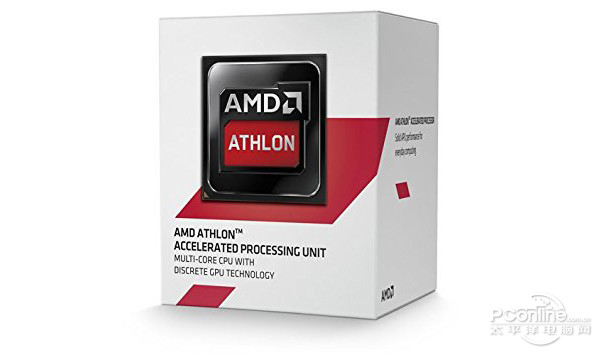
速龙APU
由于速龙 X4è¿™ç§çº¯ç²¹çš„CPUå˜åœ¨ï¼ŒAthlon系列一直与APU没有太多è”系。ä¸è¿‡åœ¨2014年之åŽï¼Œå°±ä¸ä¸€æ ·äº†ã€‚AMD在这年推出了Athlon APU,å¬èµ·æ¥æ˜¯ä¸æ˜¯å¾ˆæ‹—å£ï¼Ÿä½†ï¼Œå®ƒçš„ç¡®å˜åœ¨ï¼Œåªæ˜¯å› 为定ä½å…³ç³»ç¼ºå°‘关注度而已。
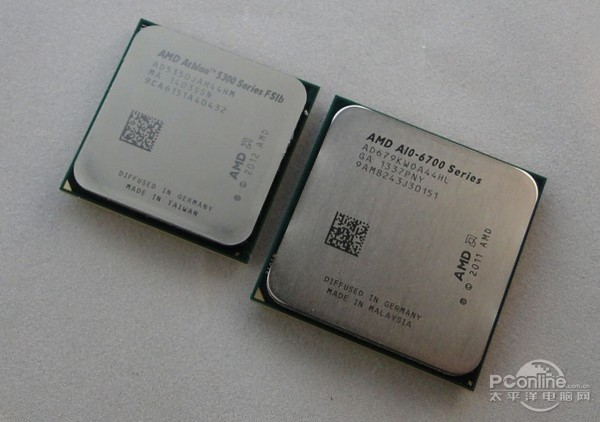
AM1æ’åº§çš„è§„æ ¼ï¼Œè®©é€Ÿé¾™APU比平时的APUæ›´å°
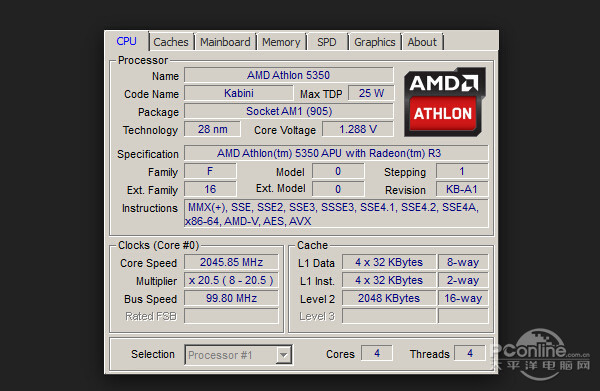
AMD 速龙APU 5350,仿佛回到了åå¹´å‰çš„è§„æ ¼
Athlon APU采用SoC系统å•èŠ¯ç‰‡è®¾è®¡ï¼Œé¢å‘å¹³æ¿ç”µè„‘装置ã€è¶…轻薄笔记本电脑ã€å…¥é—¨çº§PC以åŠè¶…低功耗HTPC。采用4æ ¸å¿ƒã€28nm制程åŠ25Wçƒè®¾è®¡åŠŸè€—,全部Athlon APU集æˆAMD Radeon R3 图形处ç†å™¨ï¼Œå¹¶ç»§Athlon X2集æˆåŒ—æ¡¥åŽï¼Œå†é›†æˆäº†å—桥,使用全新Socket AM1CPUæ’åº§ã€‚å› ä¸ºä»¥å»‰ä»·åŠä½ŽåŠŸè€—市场作为定ä½ï¼Œæ¯”平时的APU A系列还è¦ä½Žç«¯ï¼Œä¸è¿‡æ˜¯é—ªé¾™APU的大哥。所以,和闪龙APUä¸€æ ·ï¼Œå¦‚æ¤å¼±çš„è§„æ ¼ä¸Žæ€§èƒ½ï¼Œè‡ªç„¶æ²¡äººå…³æ³¨äº†ã€‚
出é“巅峰:毒龙活跃时间:2000å¹´6月至2004å¹´10月
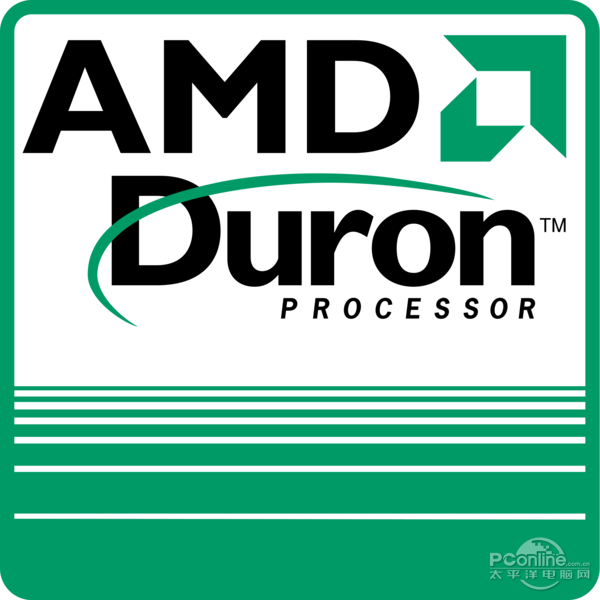
毒龙
æ— è®ºæ˜¯Athlon还是Athlon XP,都是与Intel的奔腾系列竞争。那么瓜分低端入门市场的任务,自然交给了å¦å¤–一个系列了。2000å¹´6月,AMDæ£å¼åŒºåˆ†é«˜ä½Žç«¯äº§å“线,推出了主æµå…¥é—¨çº§åˆ«çš„Duron处ç†å™¨ã€‚å› å…¶è°éŸ³ï¼Œæˆ‘们å«å®ƒä¸ºâ€œæ¯’é¾™â€ã€‚çŸæš‚的四年市场周期,毒龙ç»åŽ†äº†Spitfireã€Morganã€Applebred三代架构。
Spitfire
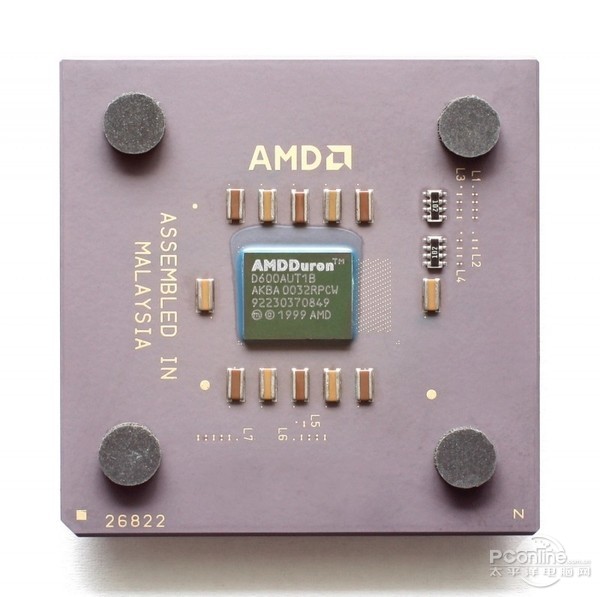
Spitfire 毒龙
åˆä»£Duron,采用Spitfireæ ¸å¿ƒï¼Œä¸ºThunderbird Athlon的简化版。主è¦é™ä½Žäº†äºŒçº§ç¼“å˜çš„容é‡ï¼Œä»…有64KB,ä¸è¿‡ä¿ç•™äº†100MHz外频,相比66MHz外频的赛扬有很强的竞争力,还ä¿ç•™äº†MMX,Enhanced 3DNow!指令集,频率范围为550MHz到950MHz。

é“…ç¬”å¤§æ³•ç ´è§£å€é¢‘让当时的玩家美滋滋
虽然毒龙和赛扬都支æŒè¶…频,但是åŽæ¥è¿™ä¸€ä»£æ¯’龙被挖掘å¯ä»¥é€šè¿‡é“…ç¬”ç ´è§£å€é¢‘åŽï¼ŒDIY领域立å³ç‚¸å¼€äº†é”…。围观群众纷纷表示è¦ä½“éªŒé“…ç¬”é»‘ç§‘æŠ€ï¼Œæ¯’é¾™çš„é£Žå¤´ä¸€æ—¶æ— ä¸¤ã€‚åŠ ä¸Šæœ¬æ¥ä¸é”™çš„性能,气势完全把当时的“铜矿â€æ ¸å¿ƒçš„赛扬处ç†å™¨æ¯”过去。
Morgan

æ‘©æ ¹æ—¶ä»£çš„æ¯’é¾™
å‘展到Palomino Athlon XP时代,对应的简化版毒龙处ç†å™¨ä¸ºMorgan架构。频率有ç€æ˜Žæ˜¾æå‡ï¼Œä»Ž900MHz到1300MHz,并ä¿ç•™MMX,SSE,Enhanced 3DNow!指令集的支æŒã€‚实际上,Morgan毒龙的性能与Athlon XP相差ä¸ç®—很明显。ä¸è¿‡ç”±äºŽAMDå°æ€äº†ç ´è§£å€é¢‘çš„æ¸ é“,åŒæ—¶ç”±äºŽå‘çƒé—®é¢˜ï¼ŒMorgan毒龙的超频能力比较逊色。所以这一代算是ä¸è§„ä¸çŸ©çš„毒龙。
Applebred
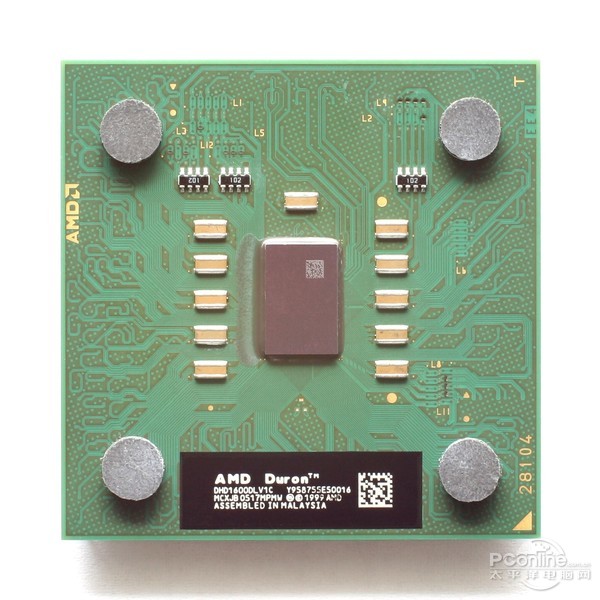
Applebred代å·çš„毒龙
到了130纳米的Applebred时代,由于当时AMDçš„ç–略就是将低PR值的130nmçš„Athlon XP进入低端市场,Applebred Duron自然备å—冷è½ï¼ŒåªæŽ¨å‡ºäº†Duron 1400ã€1600ã€1800三款,外频去到133MHz。频率的大幅进æ¥åŠ 上功耗的é™ä½Žä¹Ÿæ•Œä¸è¿‡AMDç–略的风å‘。最åŽå˜å¾—少人问津。AMD也觉得毒龙处ç†å™¨å˜å¾—èŠèƒœäºŽæ— ,于是干脆在åŽæœŸå–消了。
æ¯èª‰å‚åŠï¼šé—ªé¾™æ´»è·ƒæ—¶é—´ï¼š2004å¹´7月至今
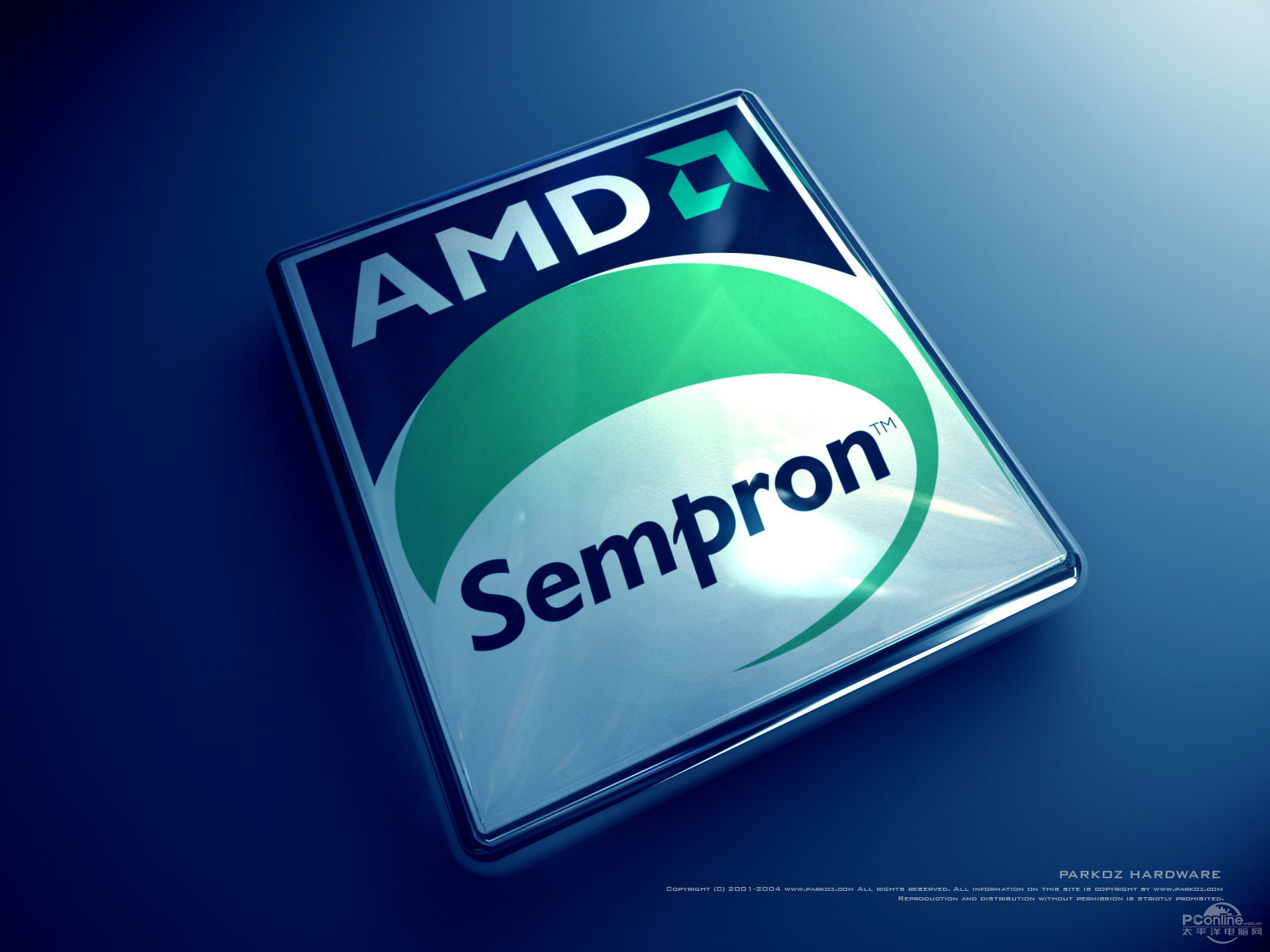
å–代毒龙的闪龙
在AMDçš„ç–略下,Duron处ç†å™¨å分尴尬,于是AMD干脆å–消了这个产å“线。以Athlon 64新时代为契机,AMD顺水推舟,把新的é¢å‘低价ä½çš„CPU系列推到å°å‰ï¼Œé‚£å°±æ˜¯Sempron,ä¸æ–‡å®˜æ–¹åå—就是“闪龙â€ã€‚
首演失败
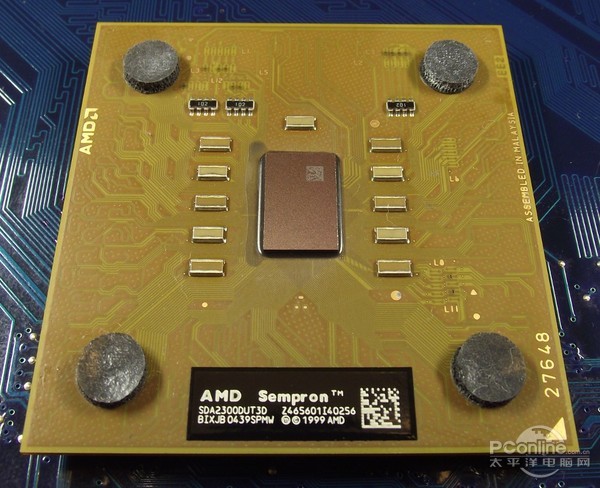
第一代闪龙其实是上一代的Athlon XP,并éž64ä½
闪龙延ç»äº†æ¯’龙的æ„愿,继ç»è¾…助è€å¤§å“¥é€Ÿé¾™æ‰“拼入门市场,åªæ˜¯ä¸å†æ˜¯å½“æ—¶K7æ—¶ä»£ç®€åŒ–æ ¸å¿ƒçš„åšæ³•ï¼Œè€Œæ˜¯ç›´æŽ¥å¥—上K7时代处ç†å™¨çš„马甲。从Thoroughbred-B到Barton,简直是狸猫æ¢å¤ªå。相比之下,高端的Athlon 64处ç†å™¨ä¸ºæ£ç‰Œçš„K8架构。这ç§åŒºåˆ«å¯¹å¾…ï¼Œæ— ç–‘å¾ˆå¥½åœ°ä¸ºAMD清ç†äº†K7系列尾货,ä¸è¿‡ä¹Ÿé˜»éš”了入门玩家享å—64ä½CPUçš„å¯èƒ½ã€‚当时的闪龙,的确带æ¥äº†ä¸€äº›è´Ÿé¢å£°éŸ³ã€‚
é‡æ‹¾è‰¯å¿ƒ
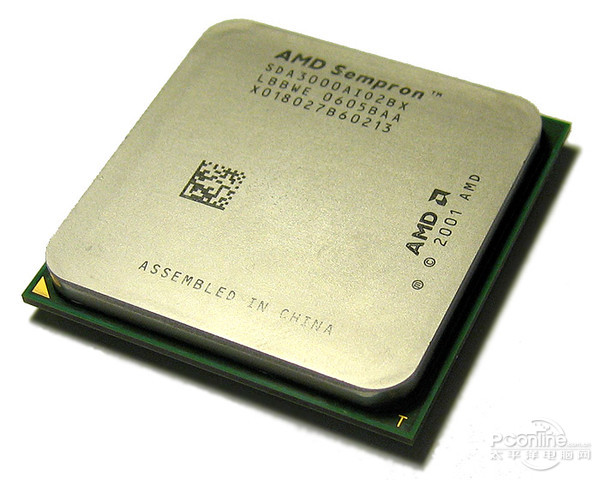
到了第二代闪龙,æ‰ä¿æŒä¸Žé€Ÿé¾™64åŒä¸€æ—¶ä»£
在完æˆä¸é«˜ç«¯å¸‚场布局之åŽï¼Œ2005年下åŠå¹´ï¼ŒåŸºäºŽK8微架构的“闪龙â€ï¼ˆä»£å·Sempron)终于å–代K7架构æˆä¸ºå…¥é—¨å¹³å°çš„主力,å¯è°“是“ç‰åˆ°èŠ±å„¿ä¹Ÿè°¢äº†â€ã€‚最åˆé—ªé¾™æ˜¯754å¹³å°ï¼Œåˆ°06年下åŠå¹´å‡çº§ä¸ºAM2å¹³å°ã€‚直到45nm时代,闪龙一直以简化版的角色出现,兢兢业业地为入门级玩家æœåŠ¡ã€‚
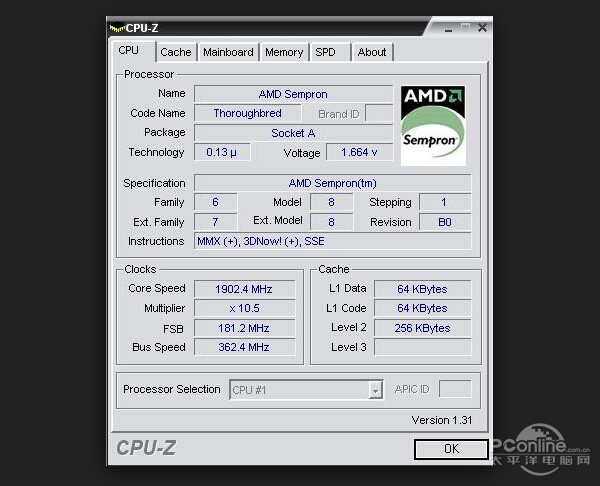
那时候的闪龙超频能力ä¸é”™
继承939时代开始速龙64的超频性能,åŒæ—¶è§„æ ¼ç®€åŒ–åŽçš„闪龙拥有出色的能耗比与强大的超频潜力,ä¸å°‘产å“外频能超上300MHz以上,以最ç»å…¸çš„2500+为例,从1.4GHz超频到2.1GHz是相当轻æ¾çš„ï¼Œä»·æ ¼ä¾¿å®œï¼Œè¶…é¢‘æ€§èƒ½ä¸ä¿—,很符åˆDIY用户的è¦æ±‚。
å½’éšå±±æž—

我们一度认为闪龙消失了,但Sempron X2 198的出现让闪龙é‡æ–°å›žå½’大众视野
到了Phenomçš„åŽæœŸï¼Œé—ªé¾™å¤„ç†å™¨åƒæ——æ¯é¼“,并将入门CPU的任务交给了Ahtlon II,直到Sempron X2 198的出现。作为LIANO APUçš„æ— GPU的版本,Sempron X2 198是比Ahtlon II X2更低端的CPUï¼Œè‡ªç„¶æ˜¯æ— äººé—®æ´¥ã€‚
从Sempron X2 198到APU Sempron X2 240ã€250,Sempron X2è·Ÿéšç€Ahtlon在APUçš„æ¼”å˜è€Œæ¼”å˜ï¼Œåªä¸è¿‡ï¼Œä½œä¸ºæ€§èƒ½æœ€åº•å±‚çš„åž‹å·ï¼Œæ—©å°±è¢«åŽ†å²å¿˜è®°äº†ã€‚
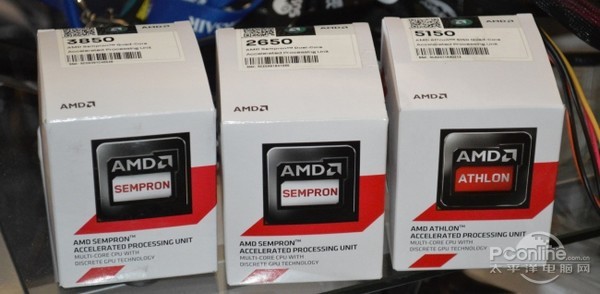
闪龙担任比Athlon更低端的èŒä½ï¼Œç¾¸å¼±çš„性能,自然在DIYé¢†åŸŸæ— äººé—®æ´¥
也许最低端的å—眼太难看,AMD将闪龙进行了转型,化身为Sempron APU,采用SoC系统å•èŠ¯ç‰‡è®¾è®¡ã€‚é¢å‘å¹³æ¿ç”µè„‘装置ã€è¶…轻薄笔记本电脑ã€å…¥é—¨çº§PC以åŠè¶…低功耗HTPC。采用å°ç§¯ç”µçš„28奈米HKMG制程。çƒè®¾è®¡åŠŸè€—在3到15瓦之间。内建采用GCNæž¶æž„çš„æ˜¾ç¤ºæ ¸å¿ƒã€USB3.0控制器以åŠè§†é¢‘转ç 器ç‰ã€‚CPUæ ¸å¿ƒæ˜¯åŽŸç”Ÿå››æ ¸å¿ƒè®¾è®¡ï¼ŒåŒæ ¸å¿ƒäº§å“å°†ä¼šä»Žå››æ ¸å¿ƒçš„èŠ¯ç‰‡ä¸Šåƒè‹±ç‰¹å°”首代Core处ç†å™¨é‚£æ ·å±è”½é®è”½ä¸€åŠçš„æ ¸å¿ƒæ•°æ¥èŽ·å¾—。
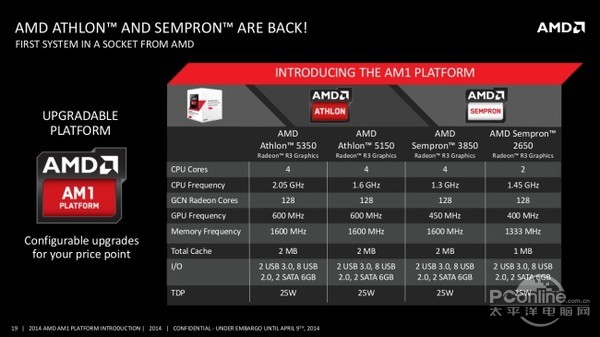
速龙APU与闪龙APU,都转型到低功耗领域了
有æ„æ€çš„是,Xbox One与PS4就是使用该架构。
ä¸è¯´ä¸çŸ¥é“,其实闪龙ä¾ç„¶åœ¨æ´»è·ƒåœ¨ç›®å‰çš„CPU市场,åªæ˜¯å®ƒçš„定ä½æ—©å°±è„±ç¦»äº†DIY硬件的范畴而已。
文末总结:新龙篇ç«
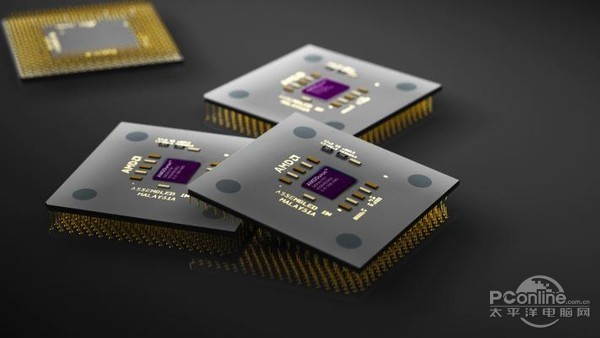
速龙的开天辟地ã€å·…峰人生ã€é€€å±…二线ã€è½¬åž‹è‡³ä»Šï¼›ç¾¿é¾™çš„出师ä¸åˆ©ã€æ‹¨ä¹±åæ£ã€æ€¥æµå‹‡é€€ï¼›æ¯’龙的çŸæš‚人生;闪龙的争议人生ã€çŸæš‚光辉ã€å½’éšå±±æž—。
龙系列的AMD CPU,跟éšè¿‡ã€è¿½èµ¶è¿‡ã€ä¹Ÿè¶…越过。当然,也有过陷入困境。我们ä¸å›½äººï¼Œå¯¹é¾™æœ‰ç€ç‰¹åˆ«çš„感情,似乎上天也注定AMDçš„é¾™æ—CPU与我们DIY玩家有ç€ä¸è§£ä¹‹ç¼˜ã€‚æ— è®ºæ˜¯æ€§ä»·æ¯”çš„å…¸èŒƒã€è¿˜æ˜¯è¶…频界的明星ã€æŠ‘æˆ–å¼€åˆ›å¼€æ ¸çš„æ—¶ä»£ï¼Œå多年的龙系历å²ï¼Œå¸¦ç»™æˆ‘们太多的惊喜,也夹æ‚ç€å¤±æœ›ã€‚最é‡è¦çš„是,在这段历å²ï¼ŒAMD告诉了我们,CPU的效率æ‰æ˜¯ç¬¬ä¸€ä½ï¼Œç‹ ç‹ åœ°æ•™äº†Intelåšäººï¼ˆè™½ç„¶FX时代被Intelå过æ¥æ•™åšäººäº†ï¼‰ã€‚
é”龙驾到,黄è¢åŠ 身。未æ¥AMD龙系CPU的历å²ï¼Œå°†è¿›å…¥æ–°çš„ç¯‡ç« ï¼
We adopt the advanced technology imported from Europe, patented technology, specialized software to optimize the design for 11kV cast resin Dry Type Transformer. The core is made of cold-rolled grain-oriented silicon steel sheet which cut in step-lap by GEORG Germany TBA core cutting lines and laminated by the method of fifth-order step-by-step stacking technology, enabling the no-load performance of the core to improve greatly. The epoxy resin from American HUNTSMAN is adopted for the windings which casted in the vacuum resin casting machine imported from HEDRICH, Germany. The winding material ensures good permeability, no bubbles occur, which leads to minimum partial discharge. The HV and LV winding mate with each other tightly, which ensures solid strength of structure and capability to withstand short circuit and vibration. Under normal service condition, the service life of dry type transformer is 30 years. No crack will form on the surface of transformer winding due to temperature variation as long as the transformer runs under normal service condition.
11Kv Transformer,11Kv Dry Type Transformer,11Kv Cast-Resin Transformer,2500Kva Dry-Type Transformer
Hangzhou Qiantang River Electric Group Co., Ltd.(QRE) , https://www.qretransformer.com